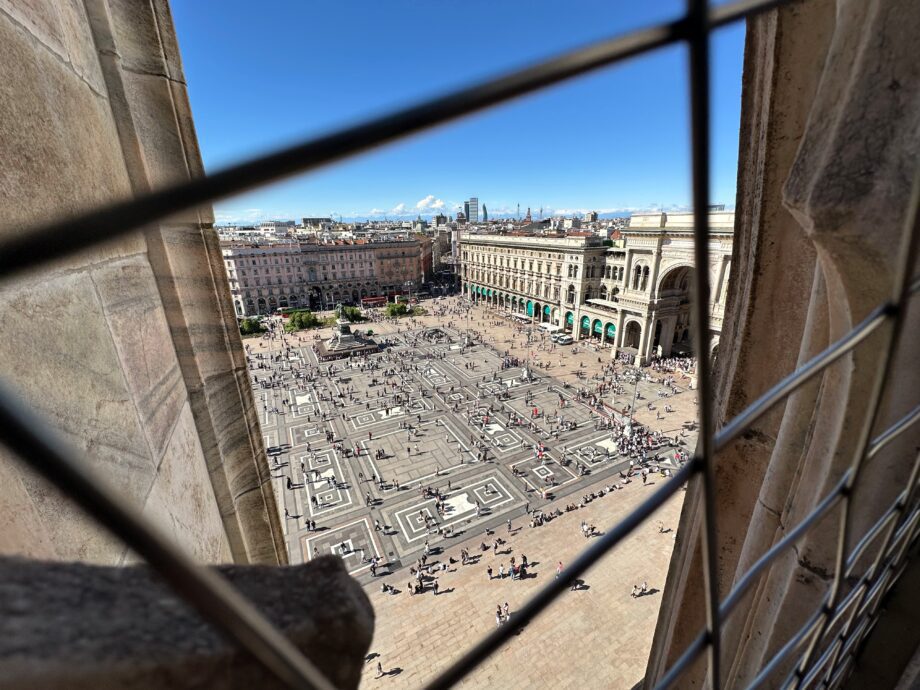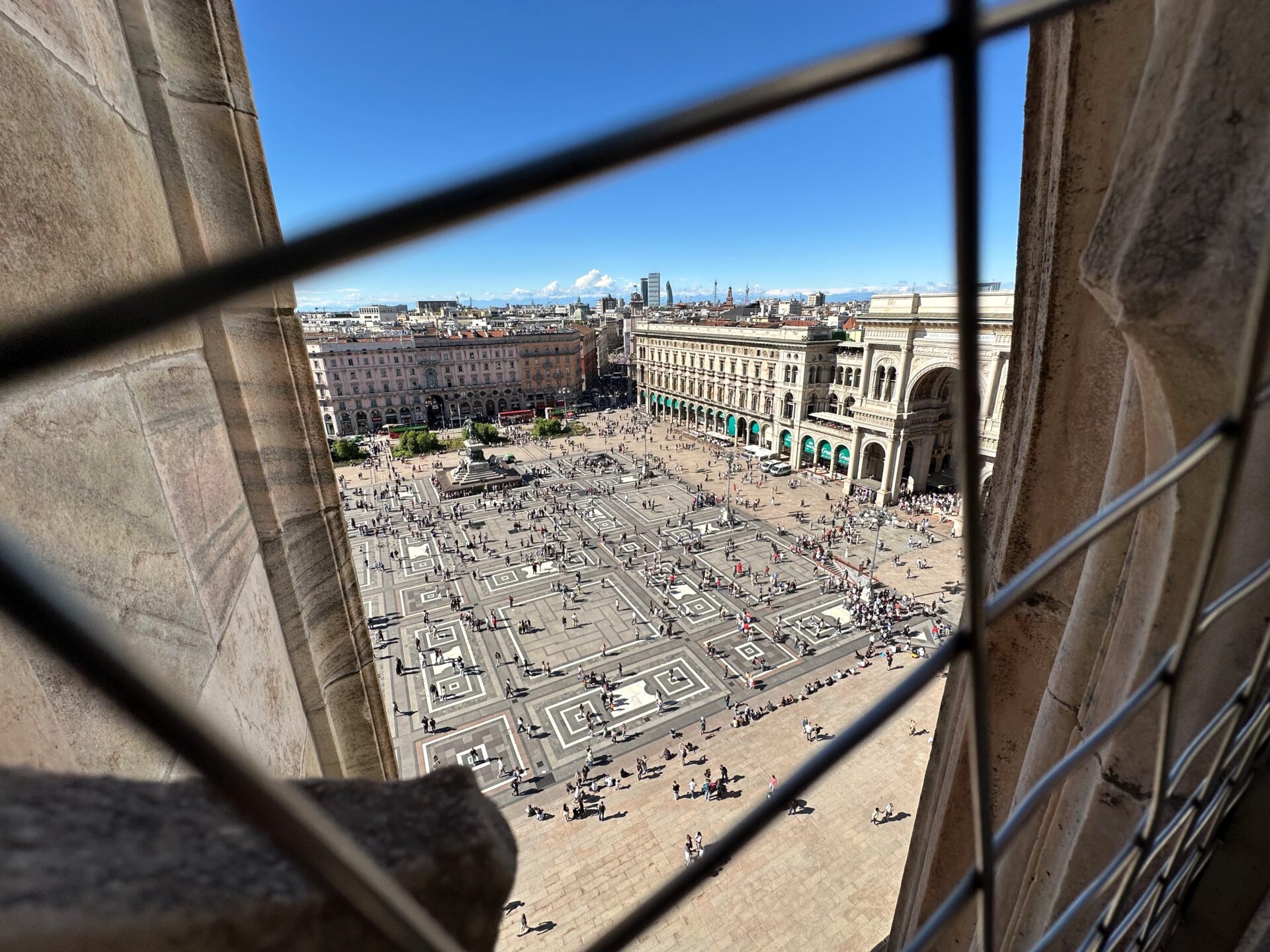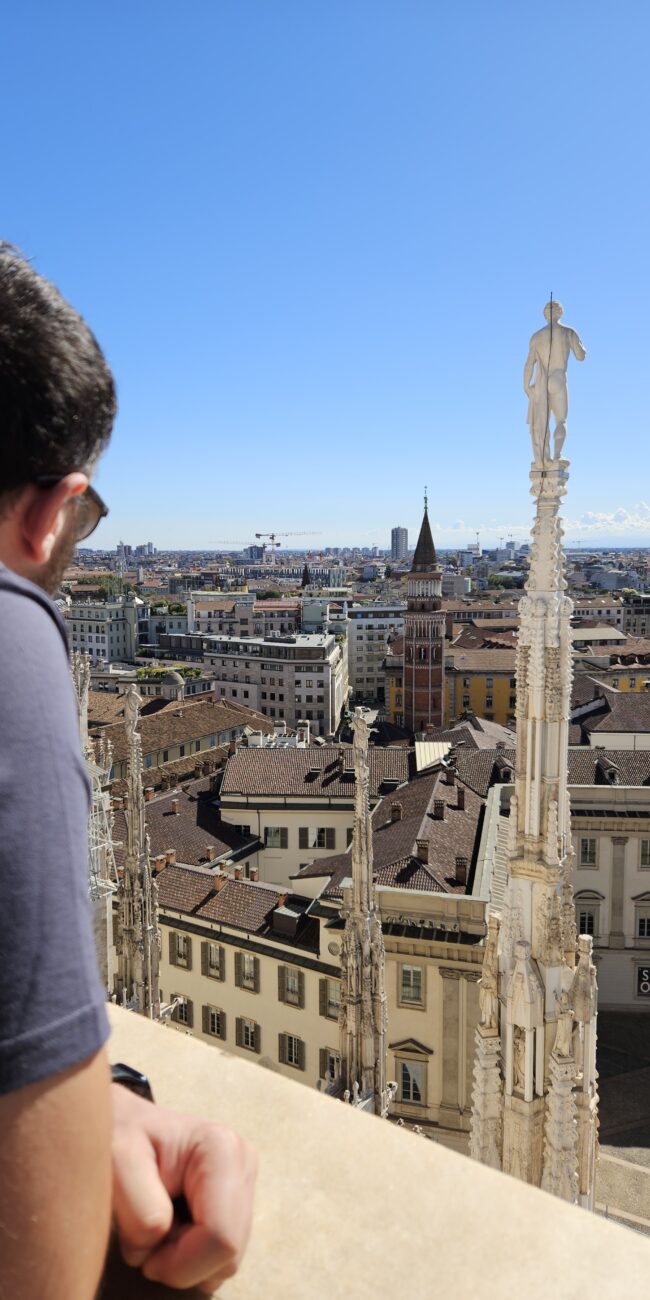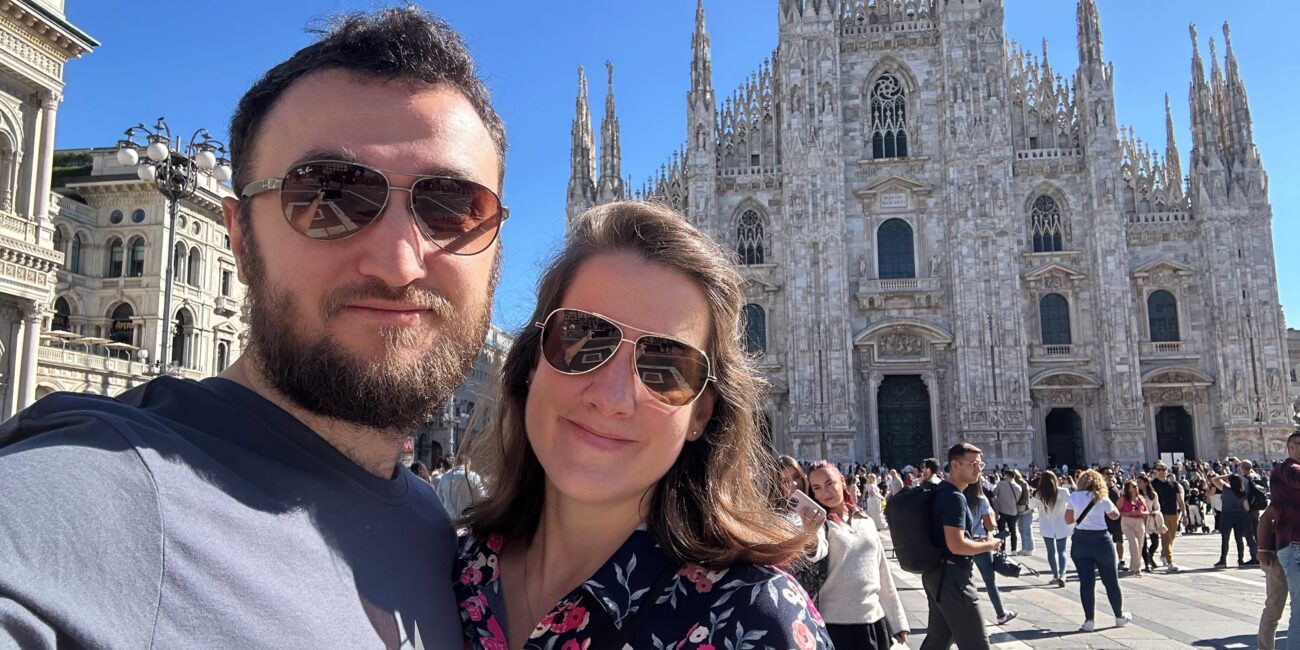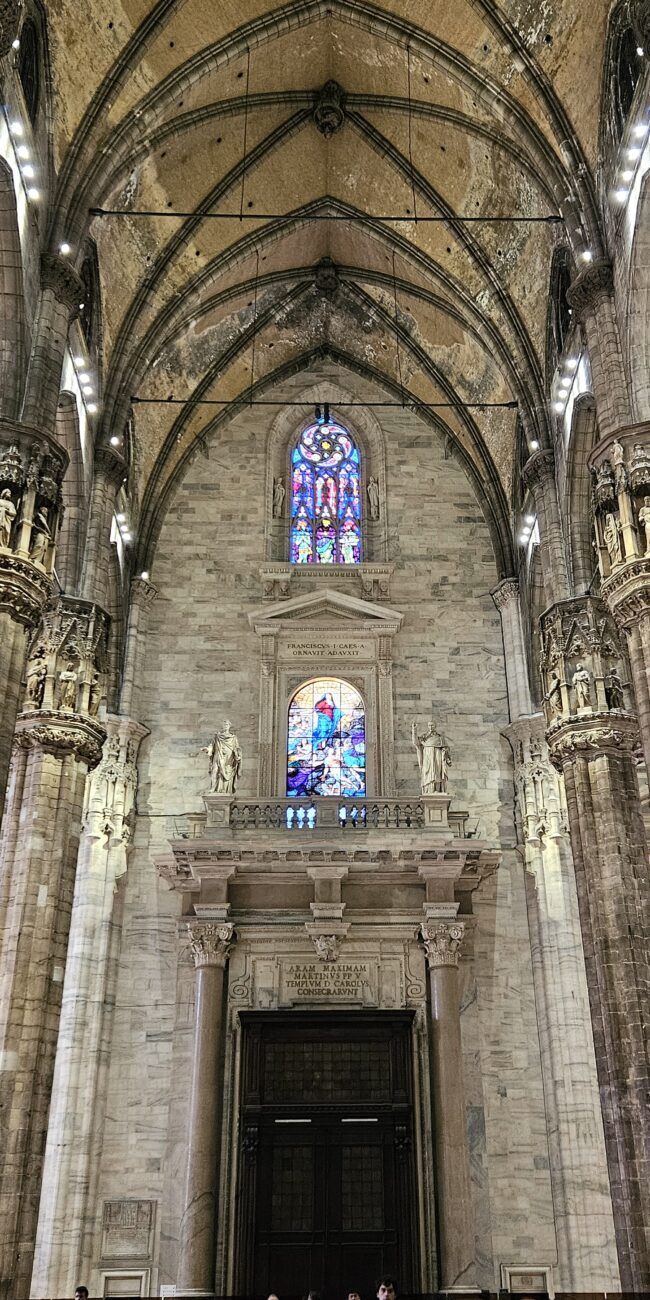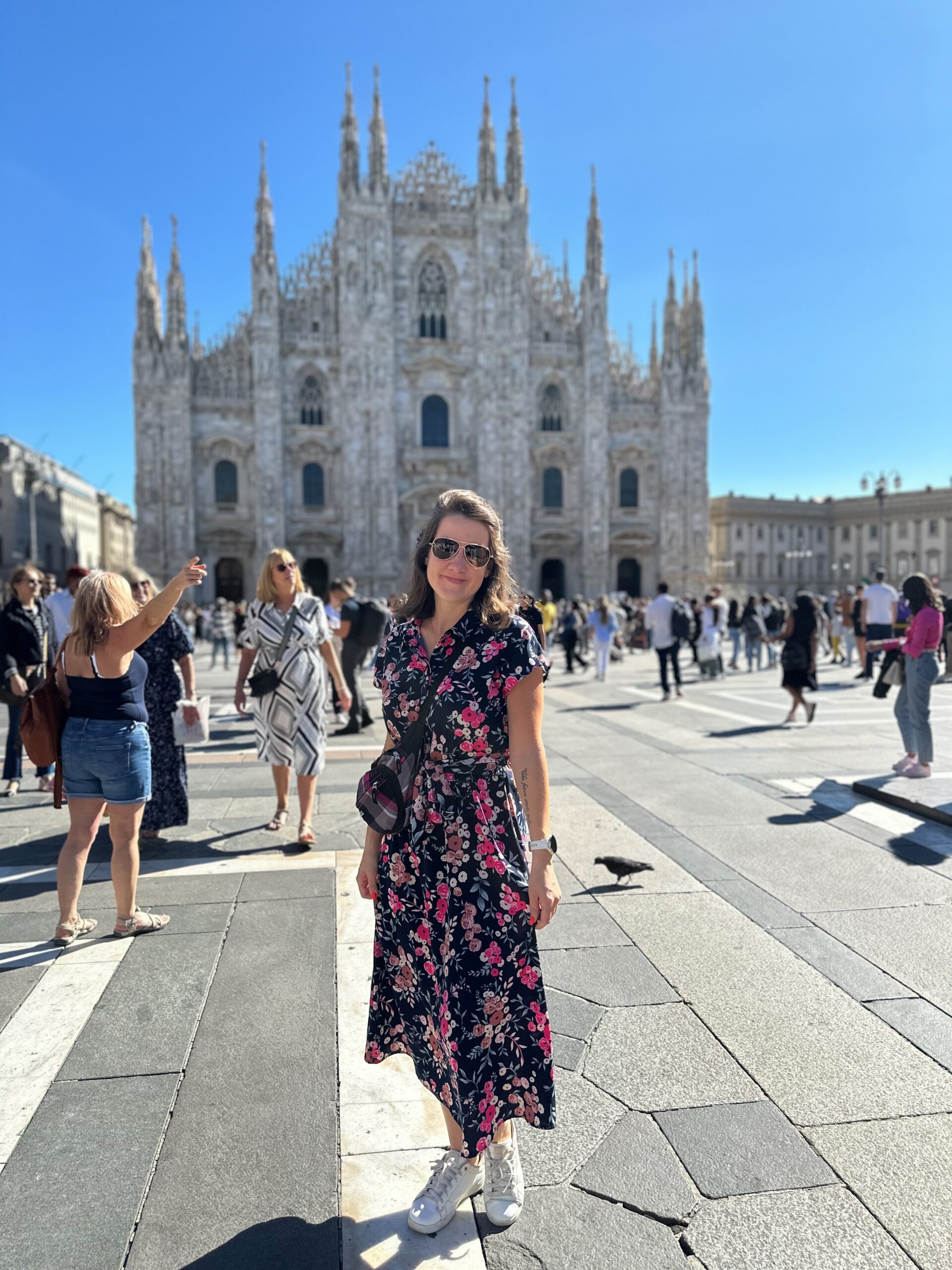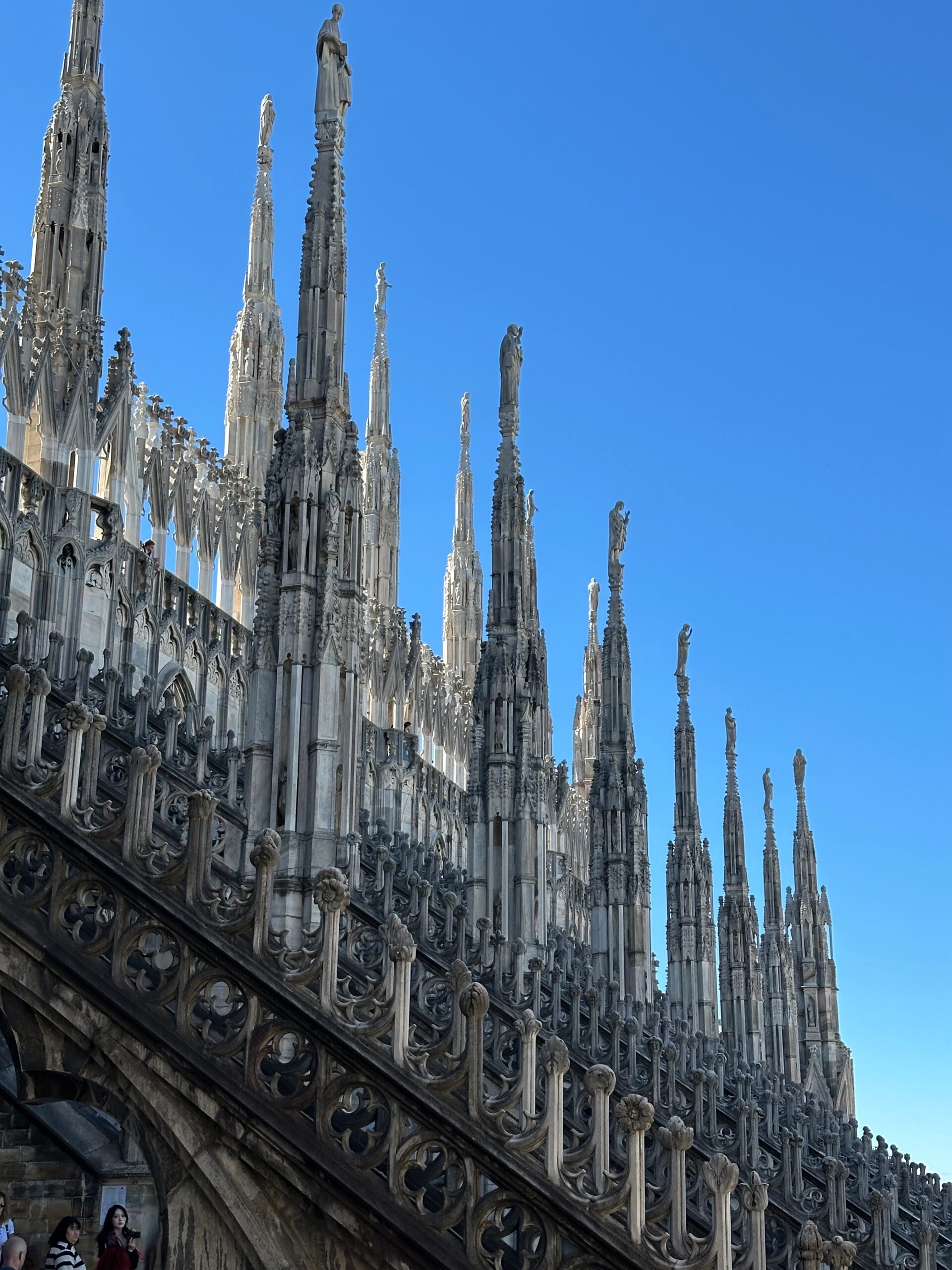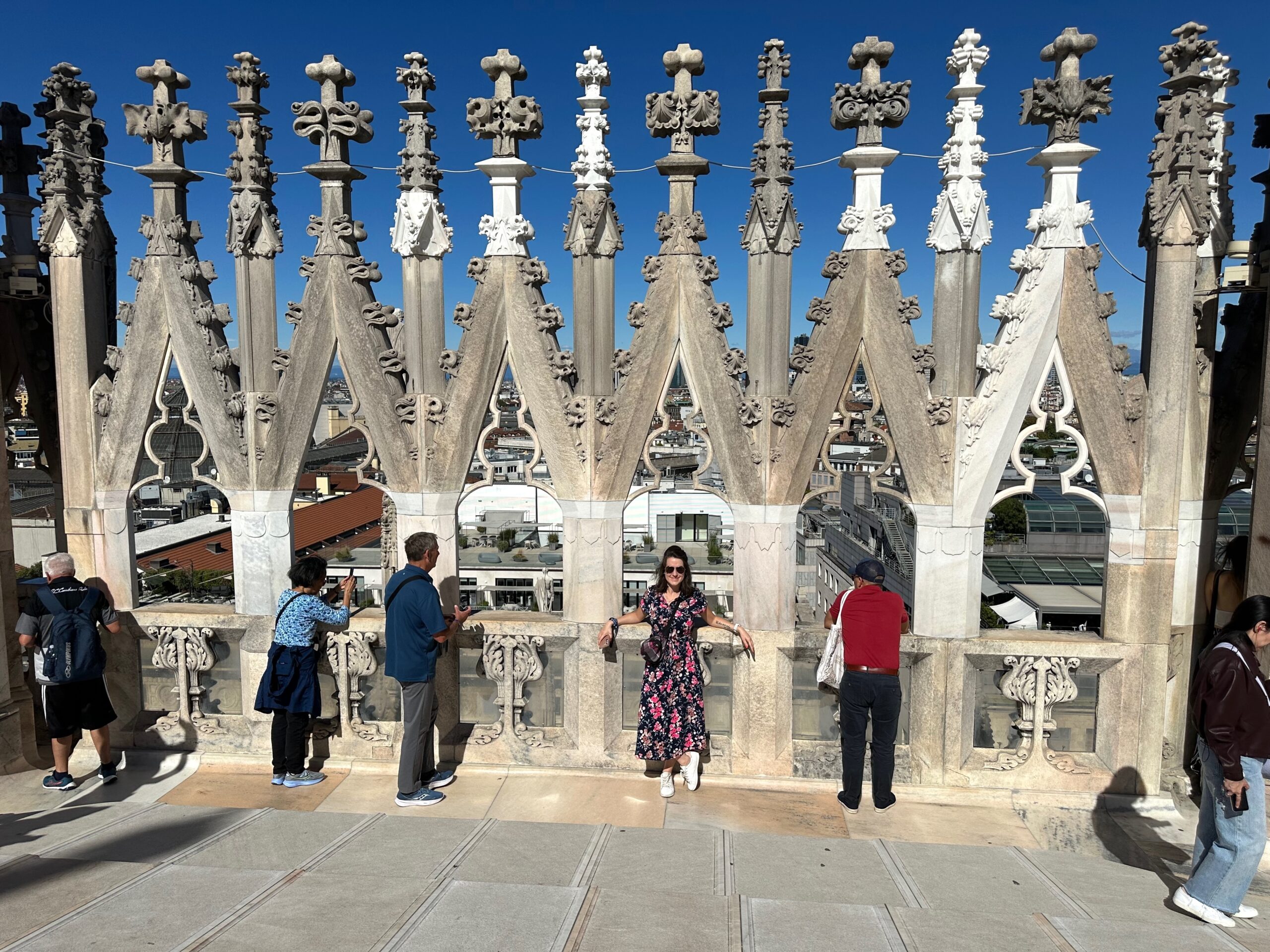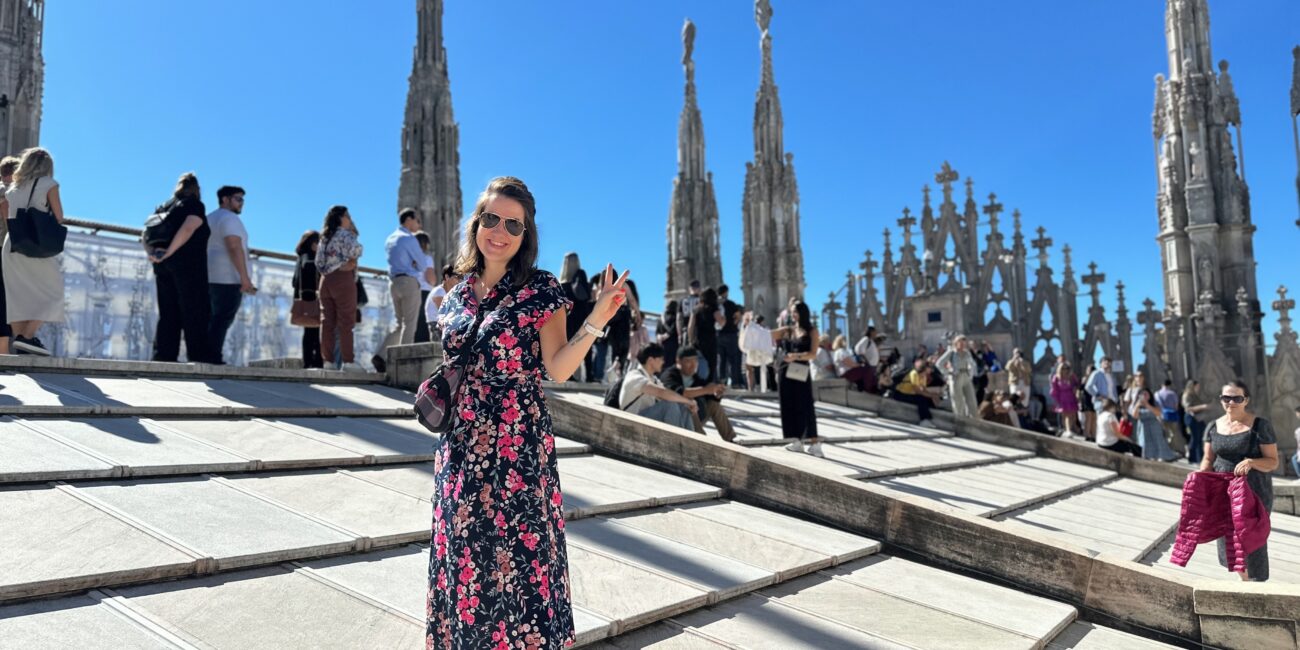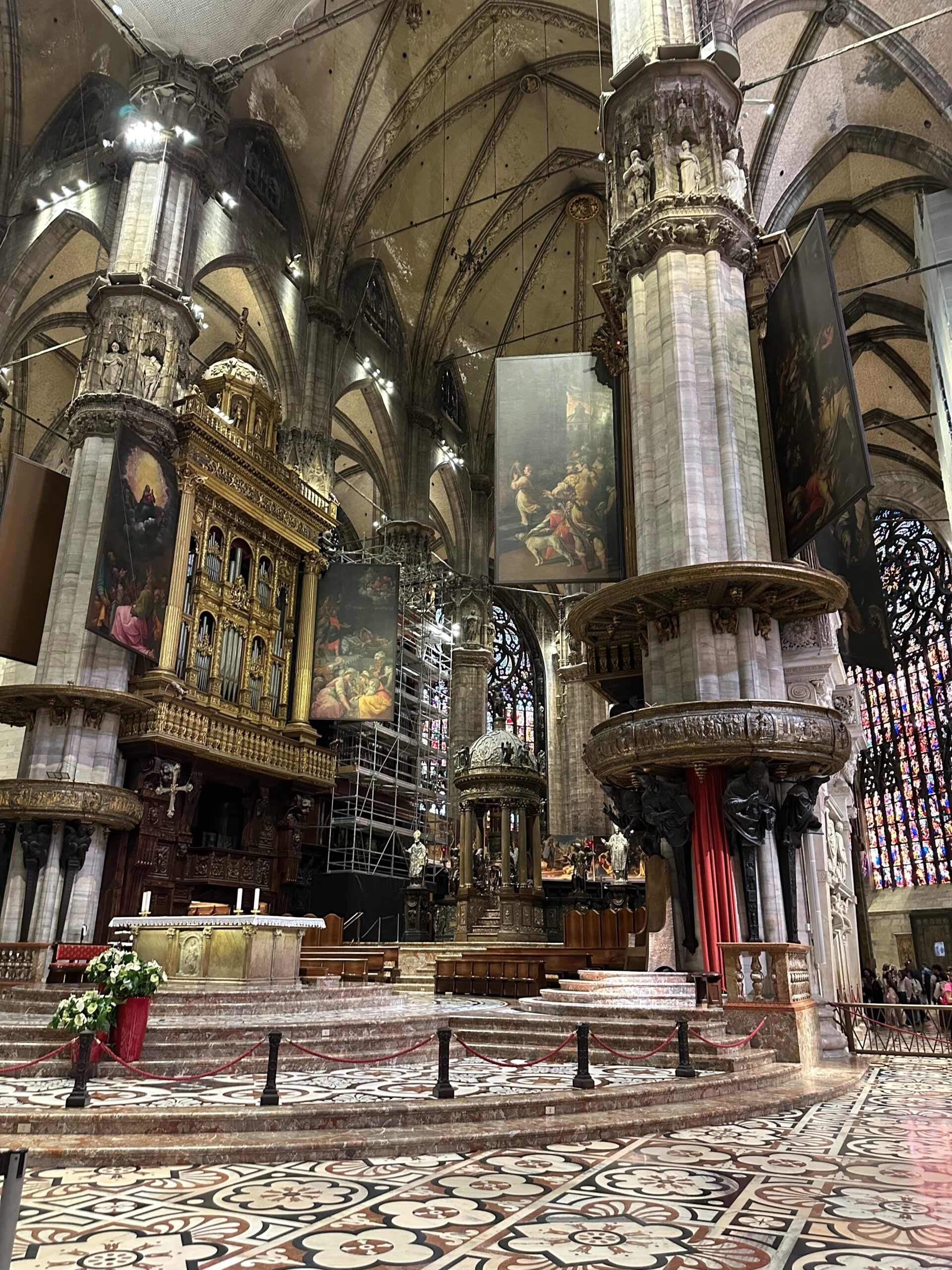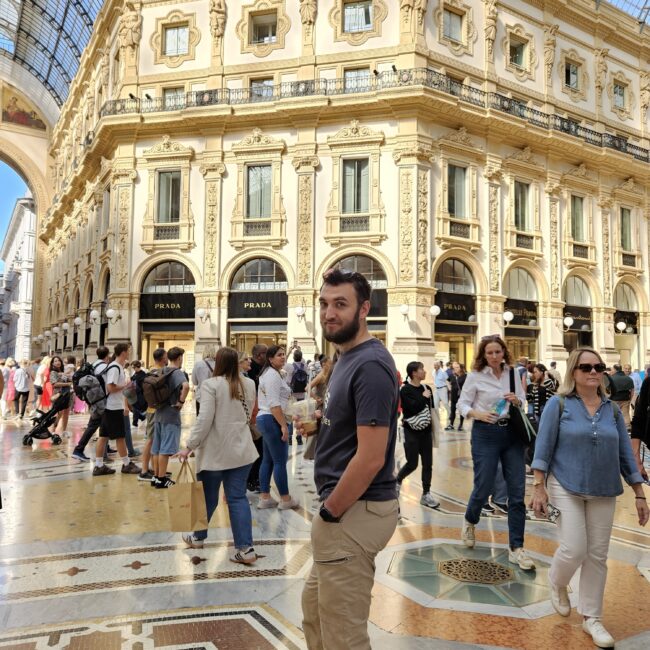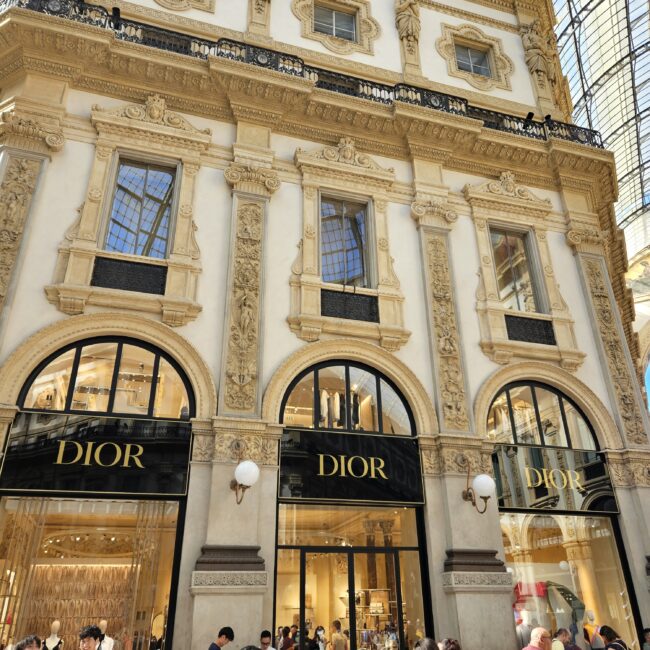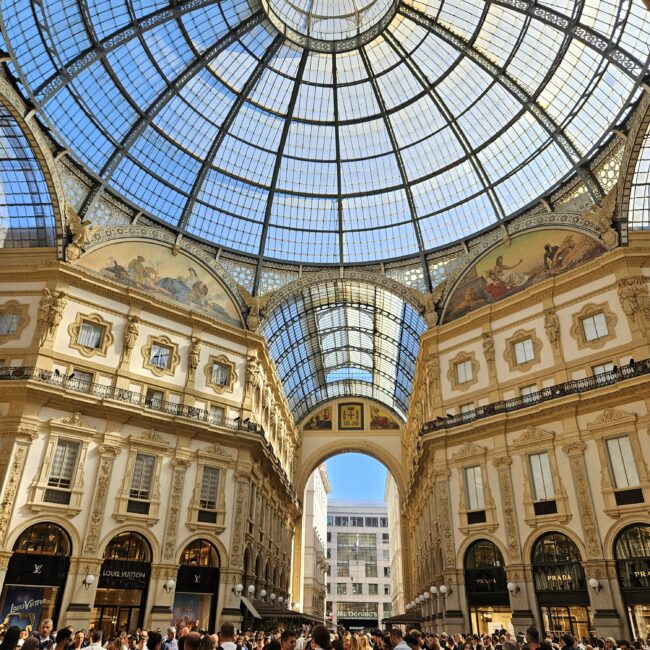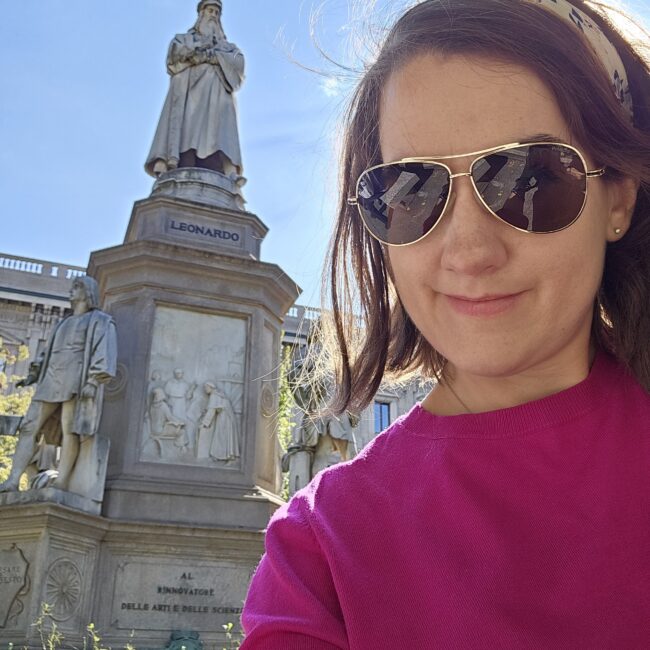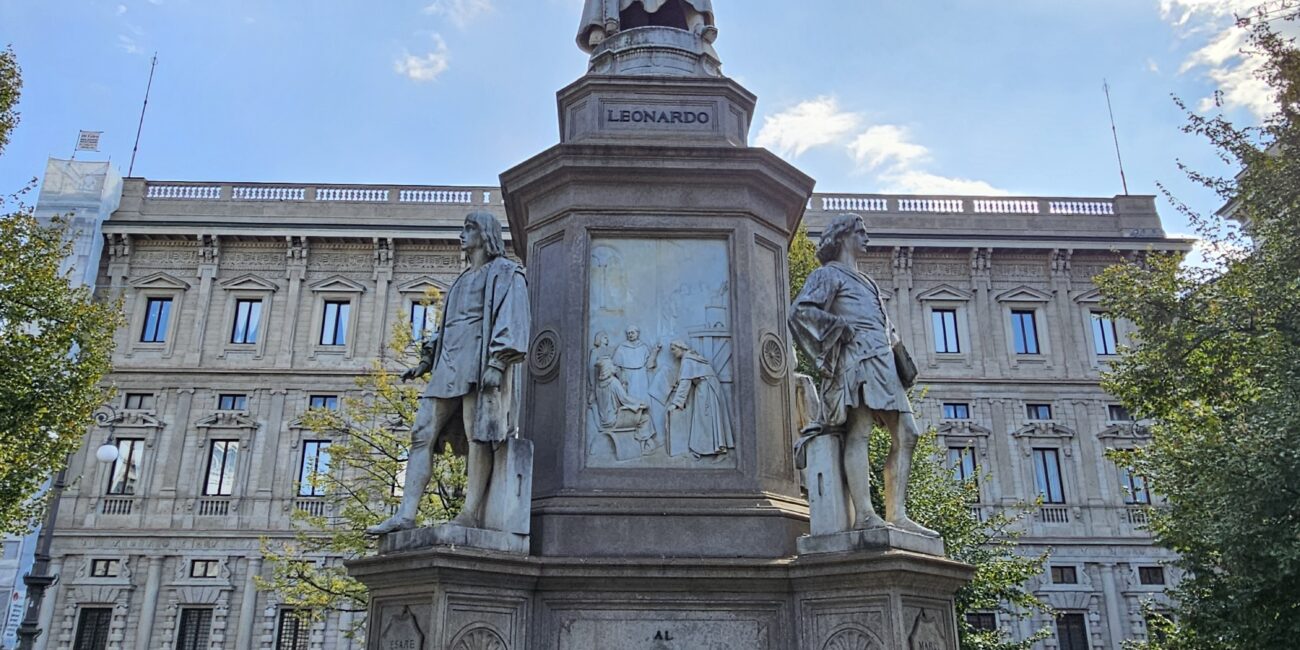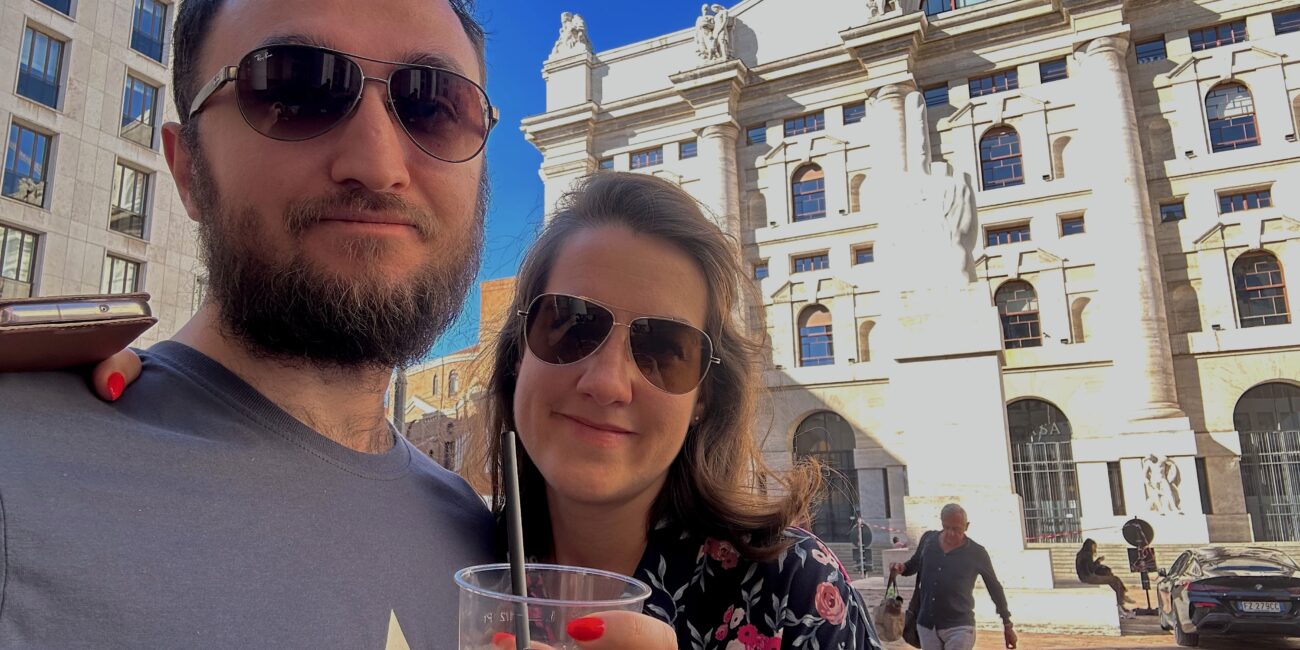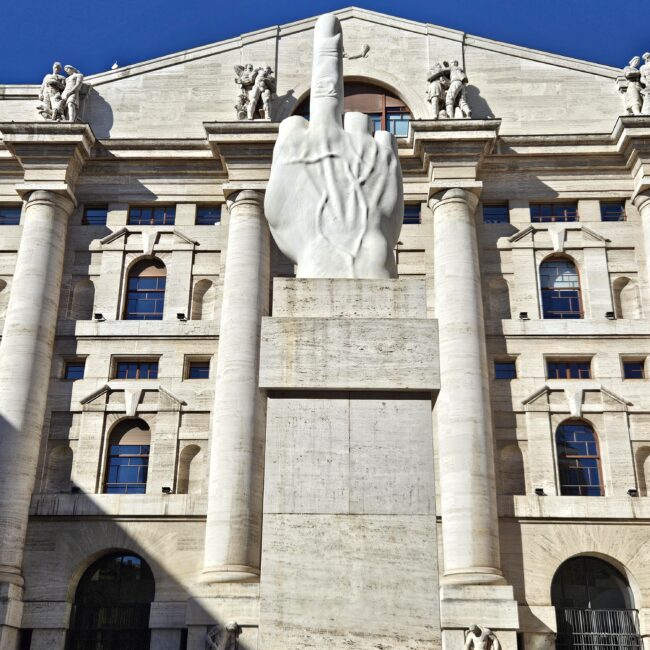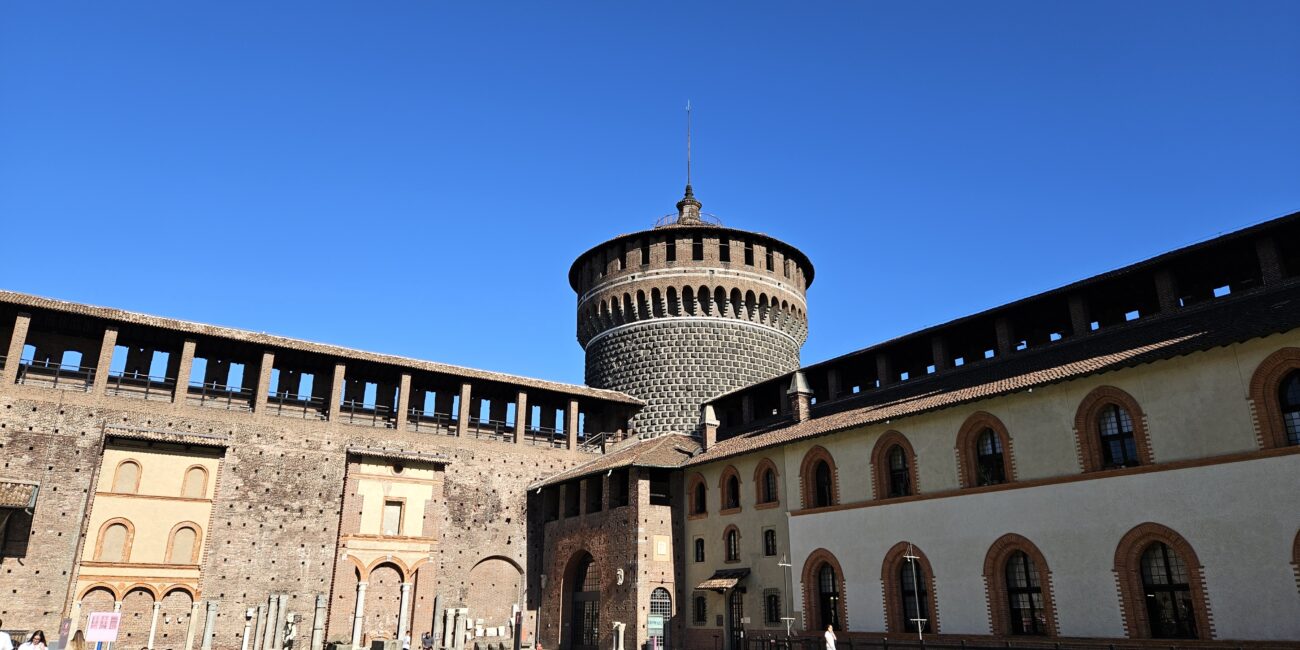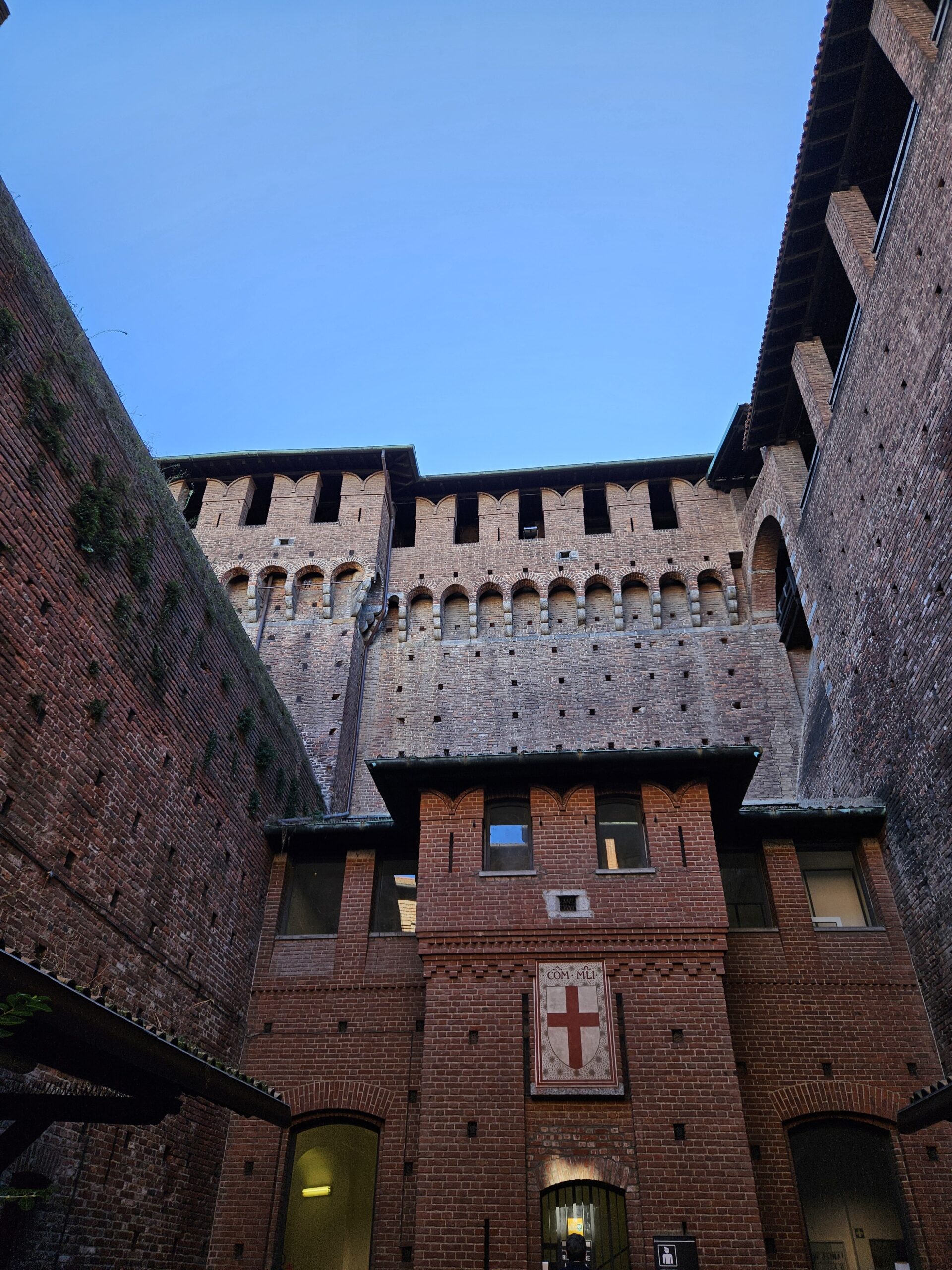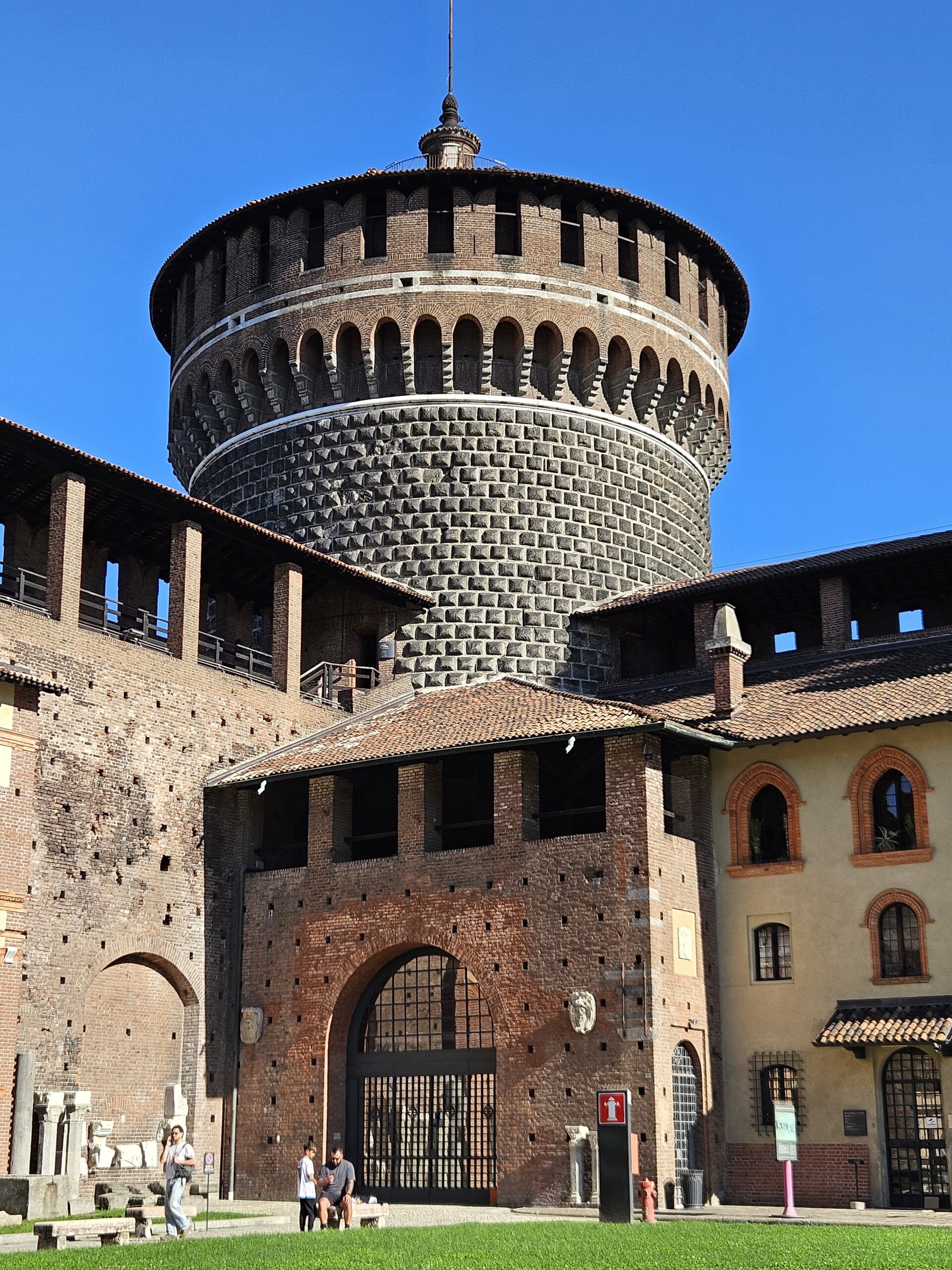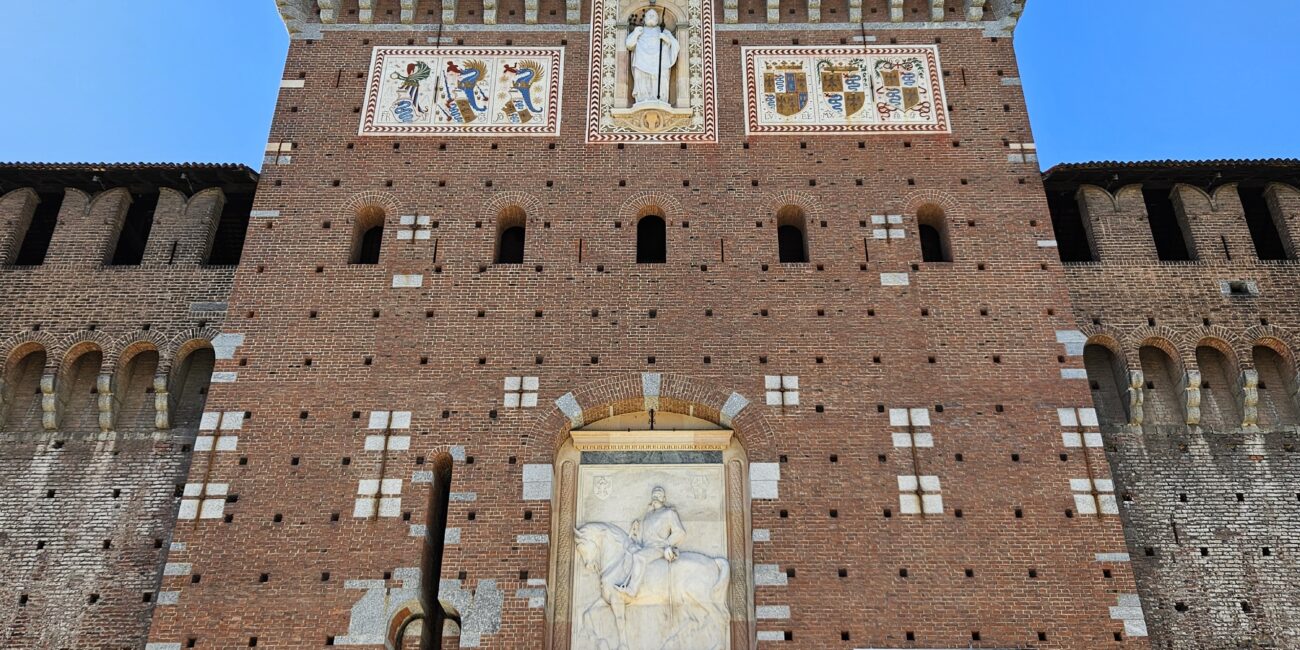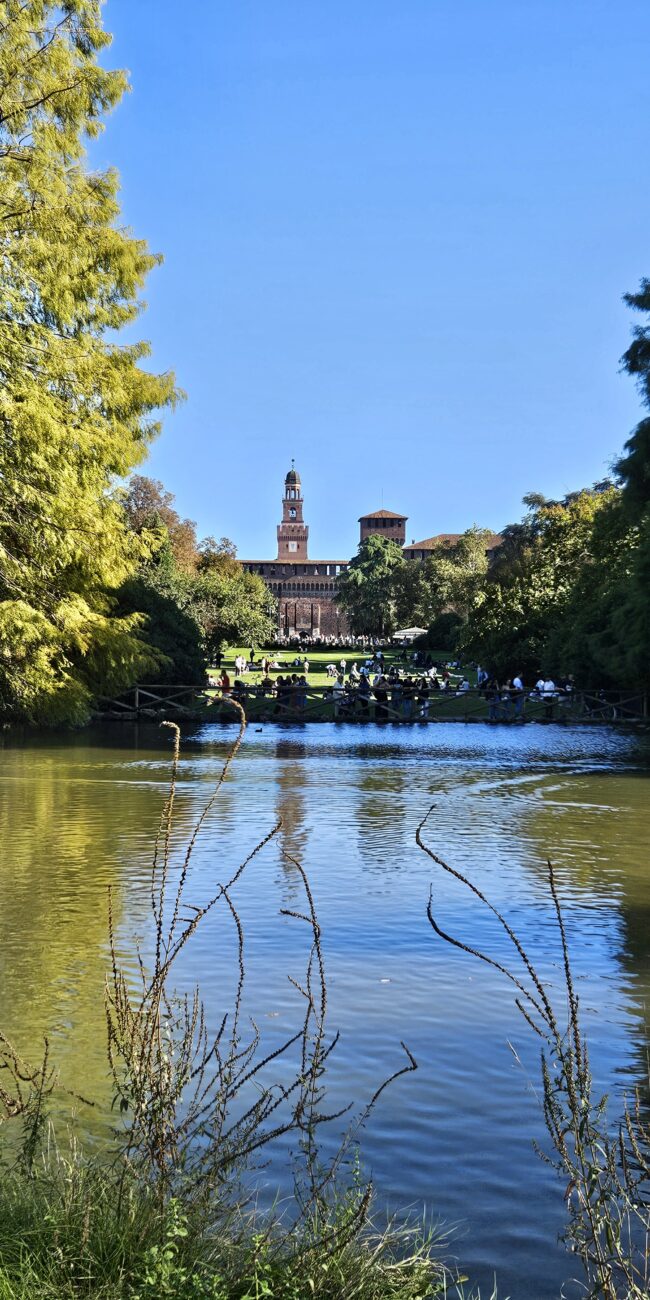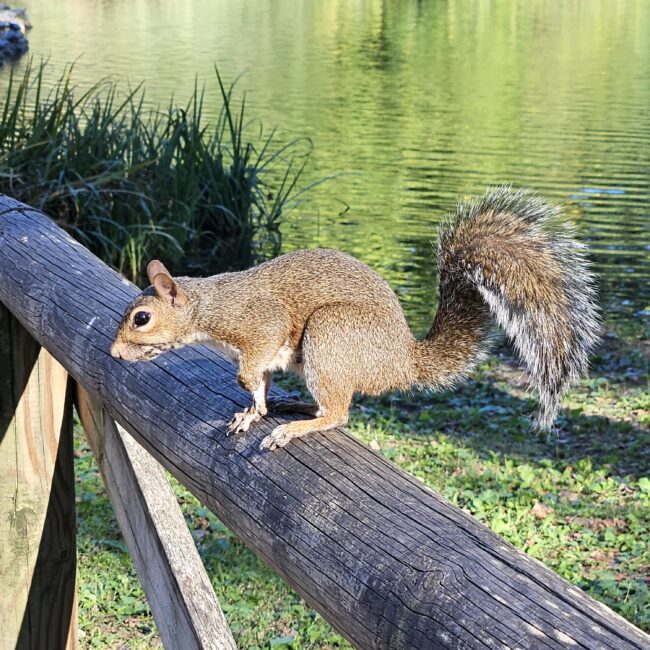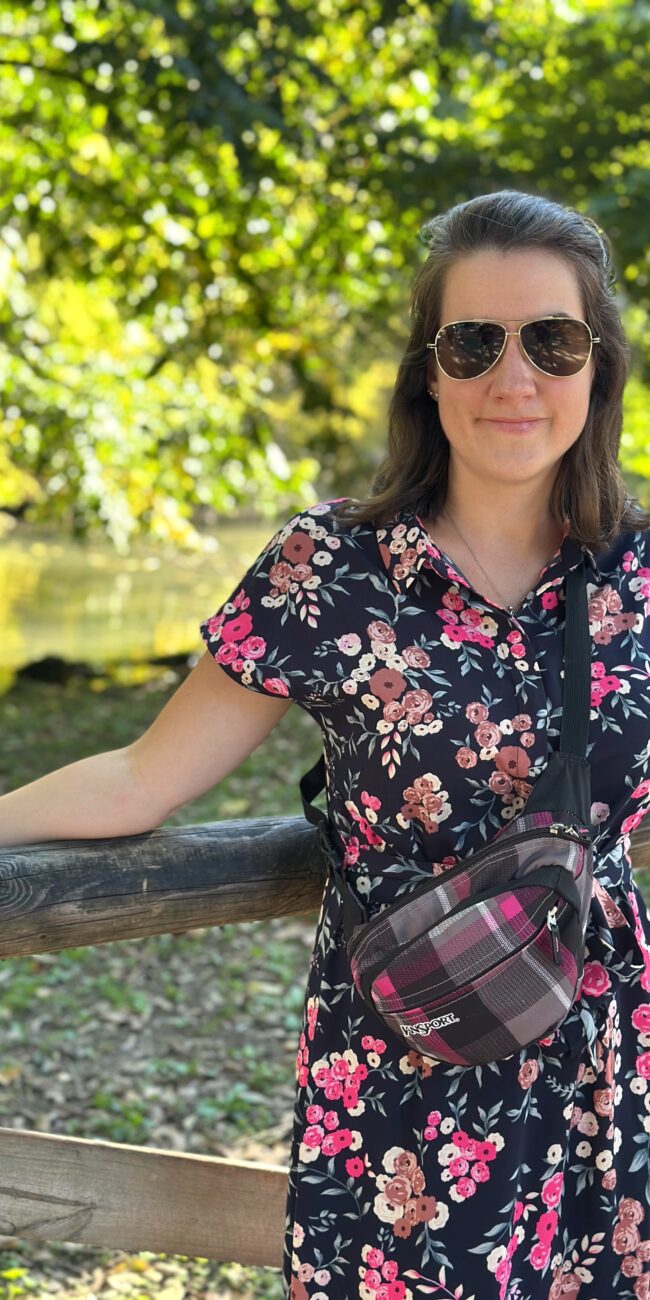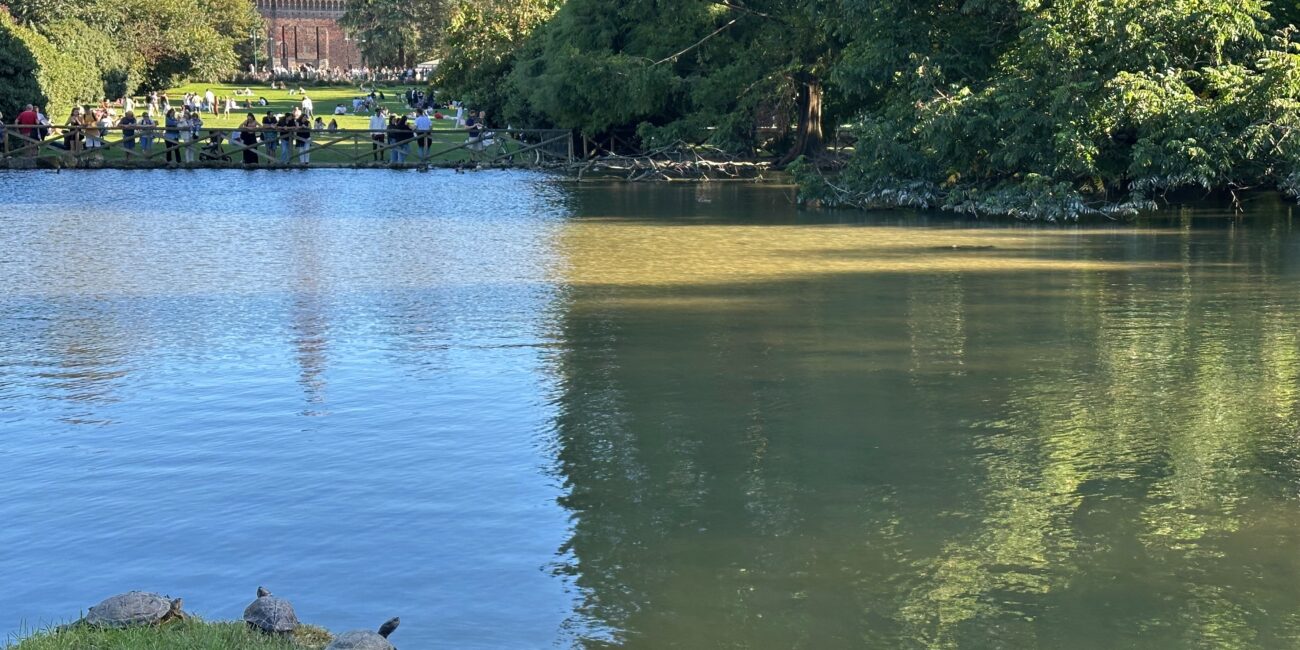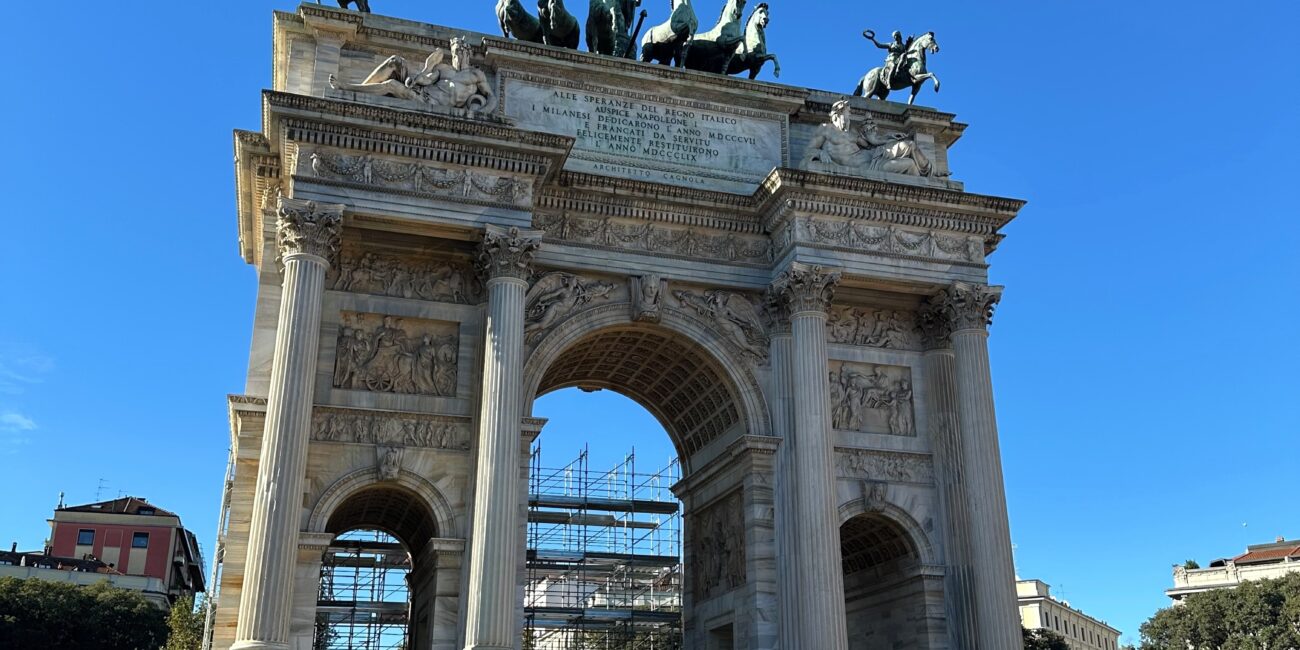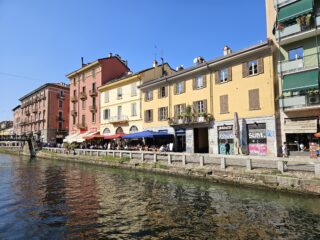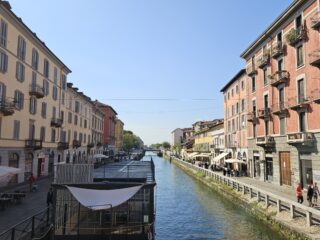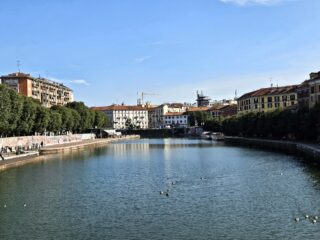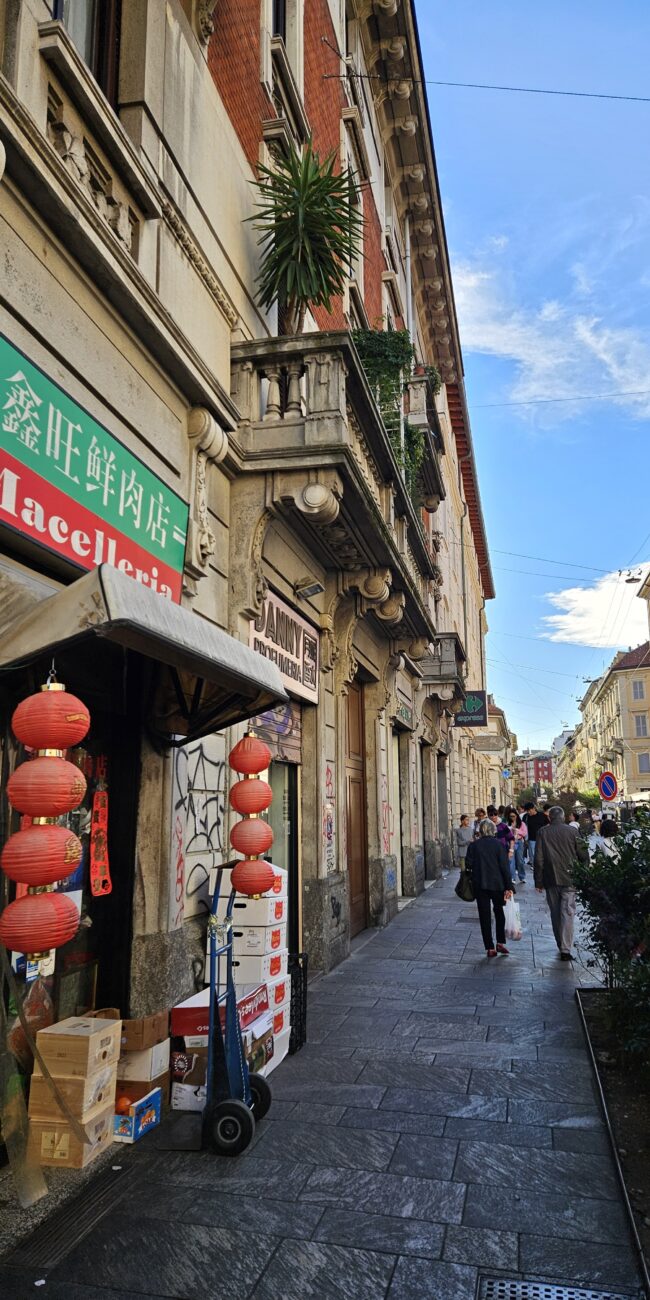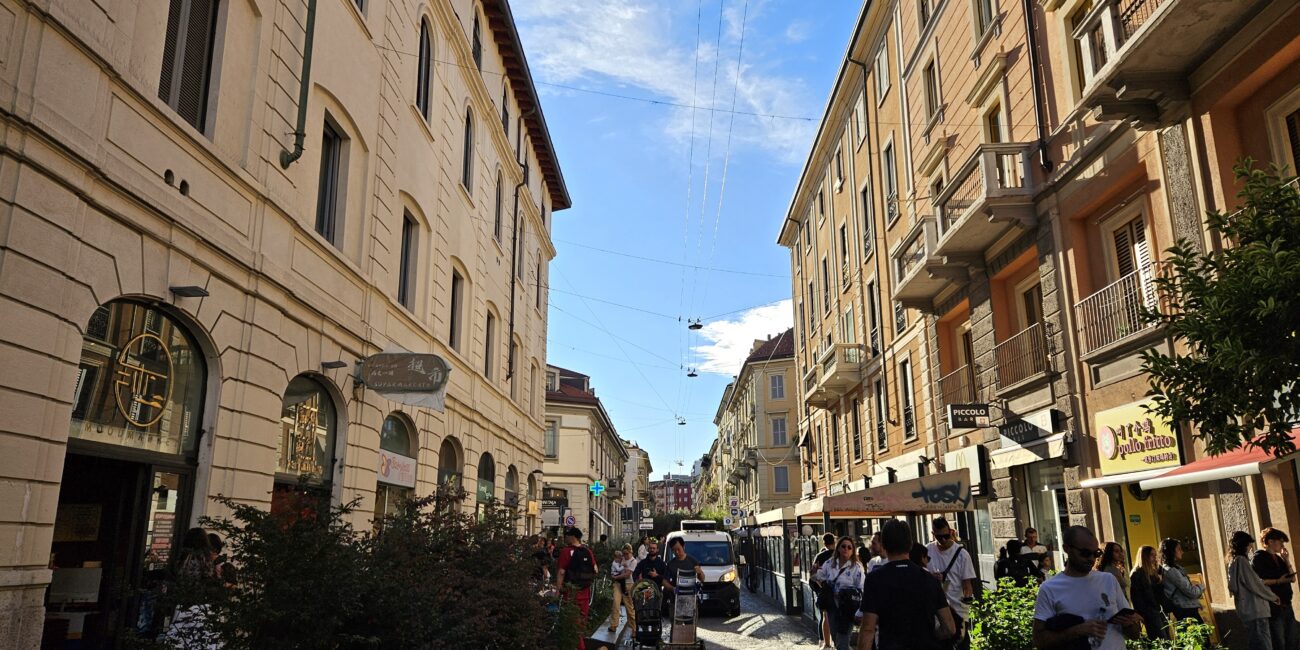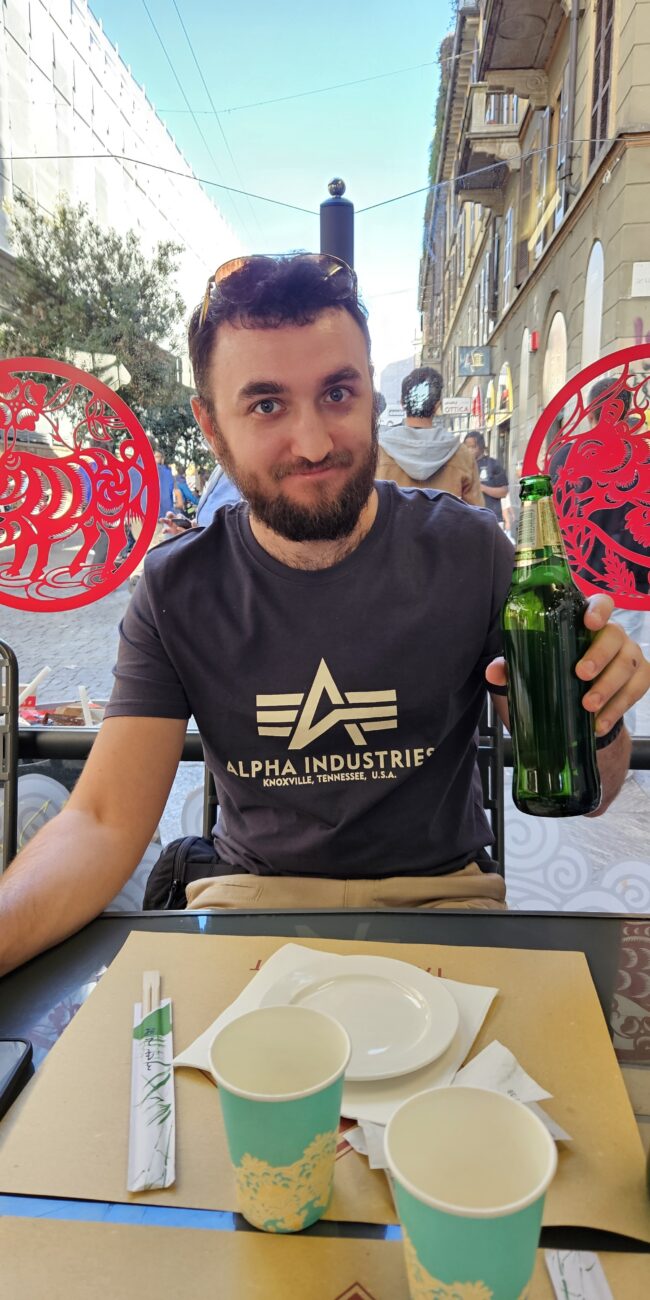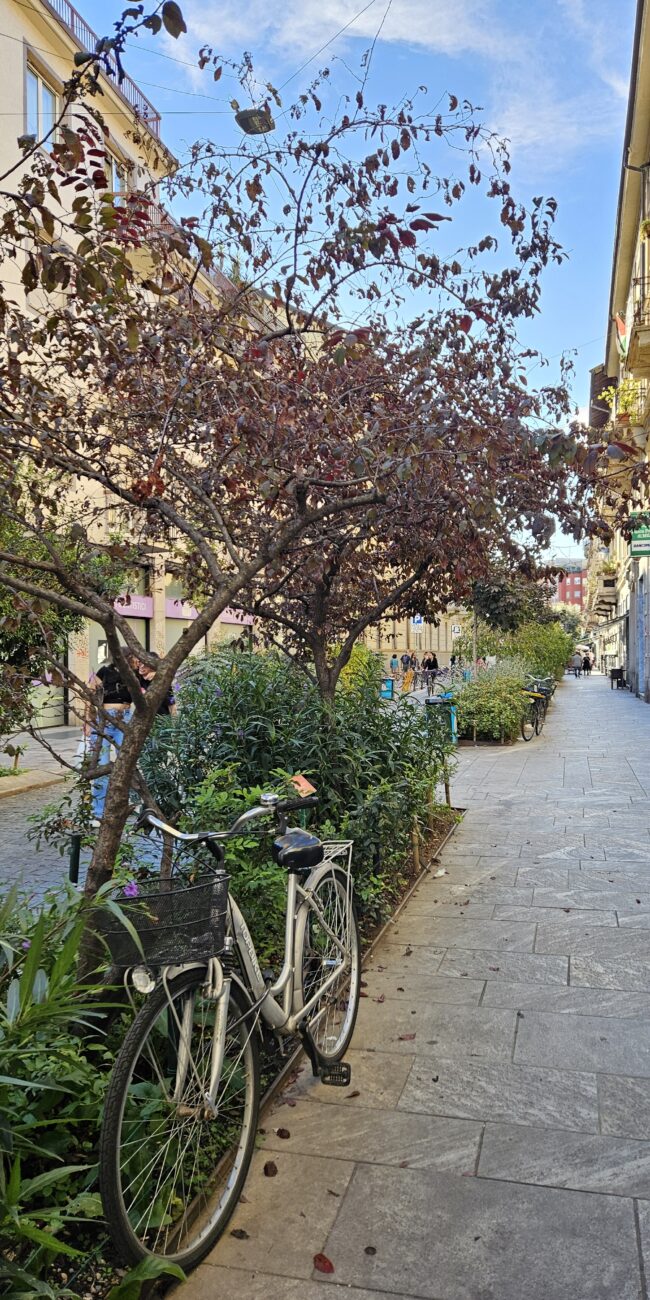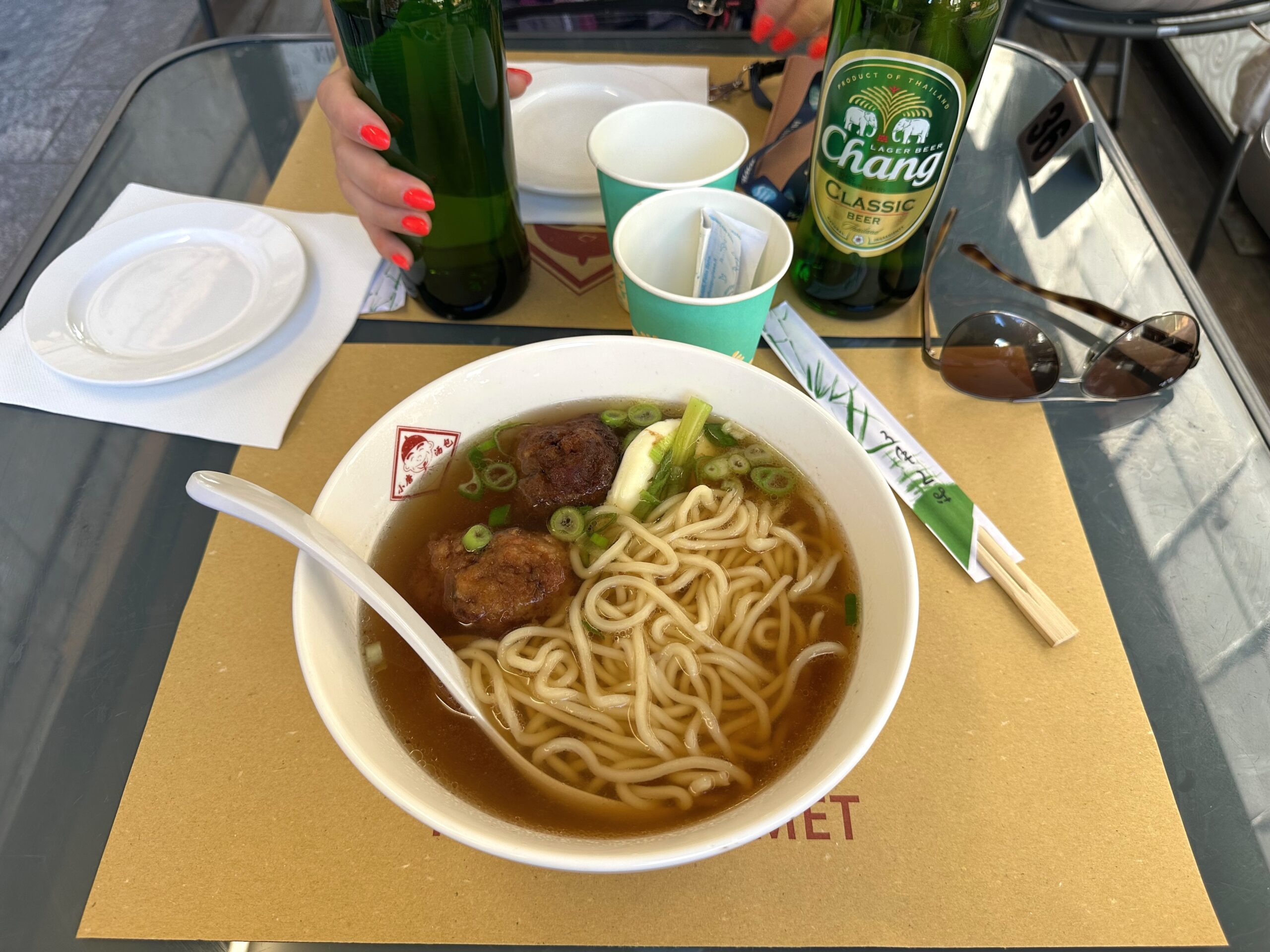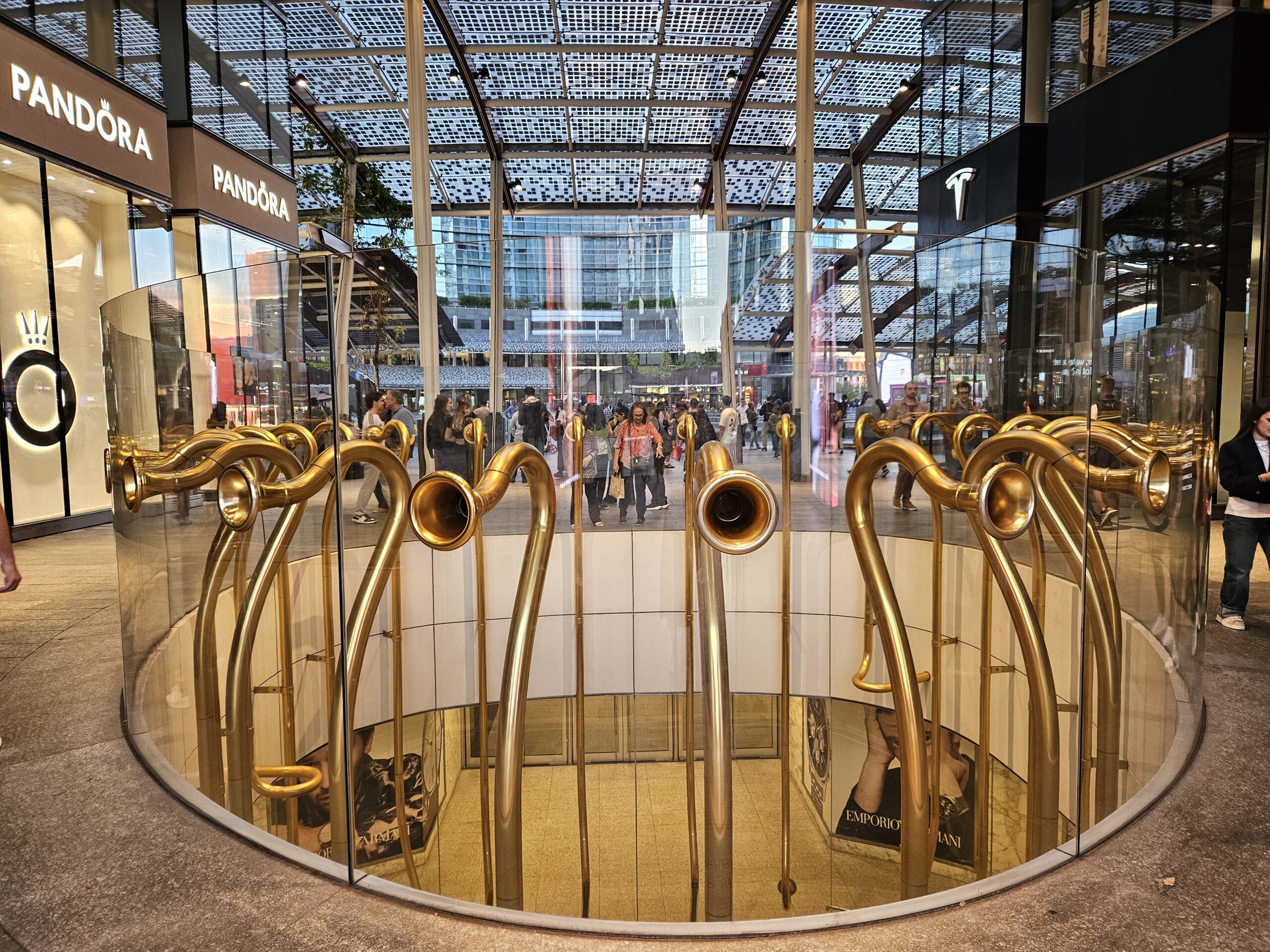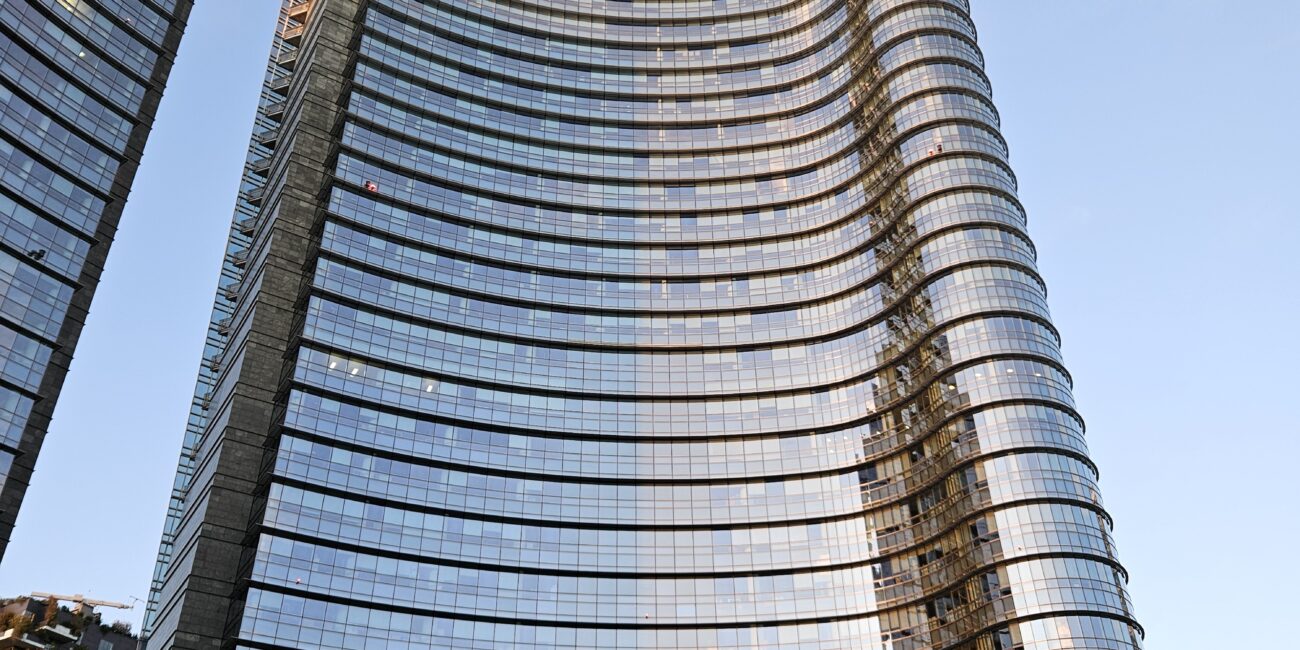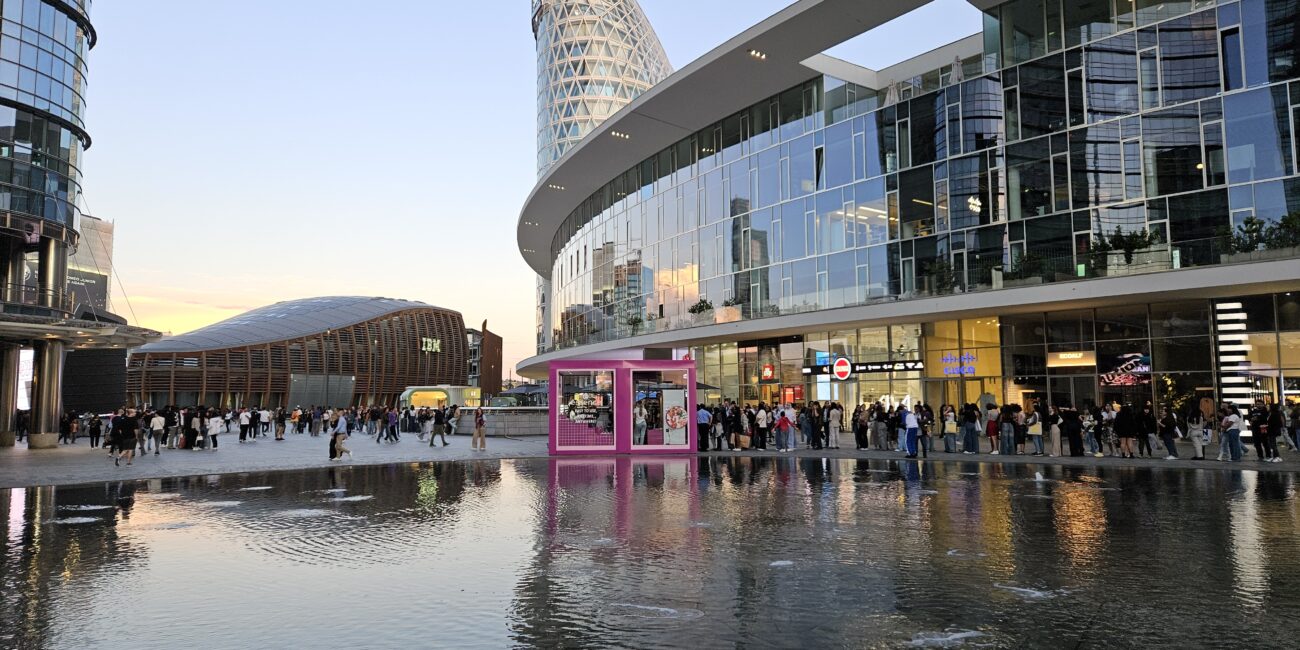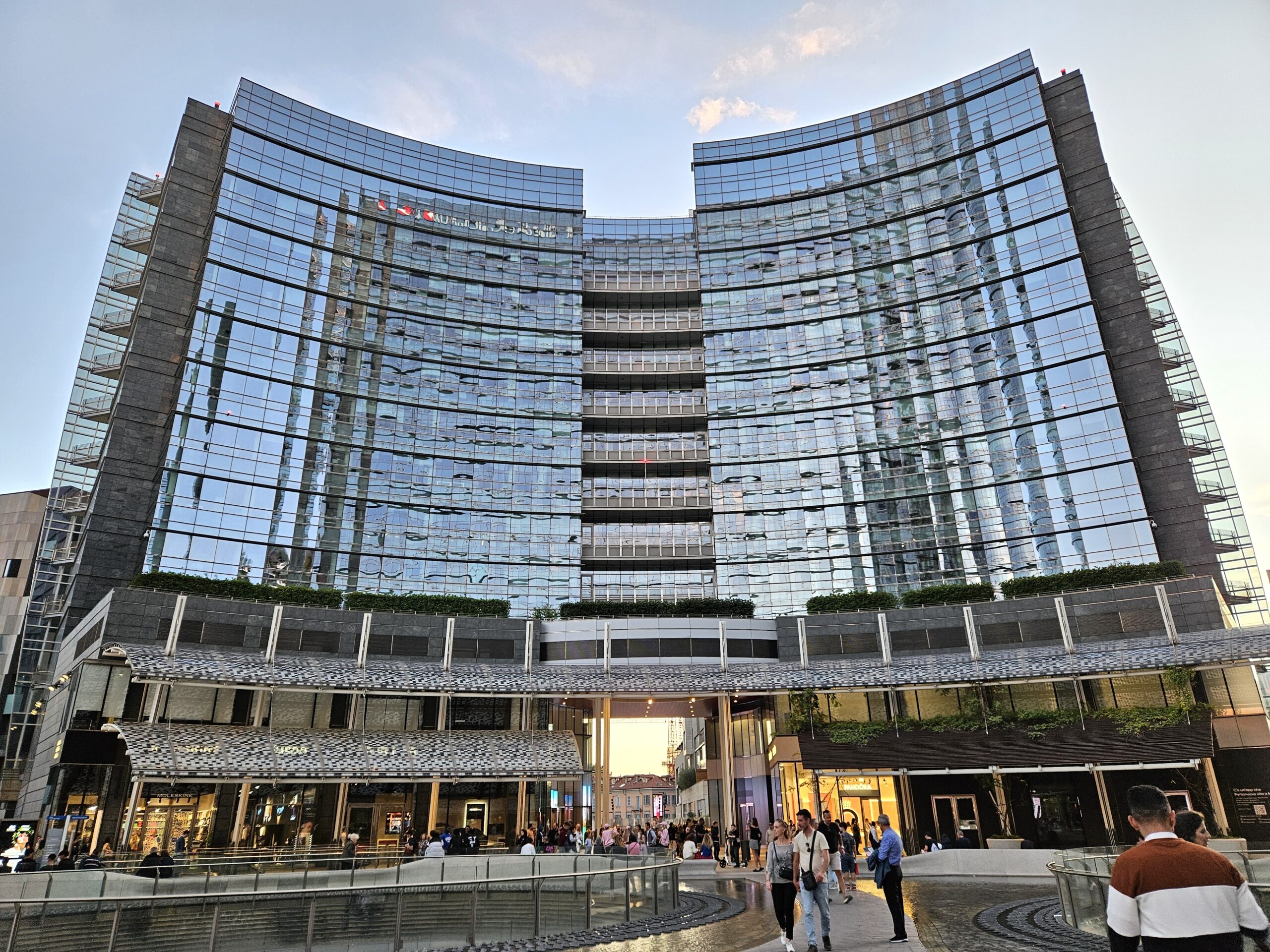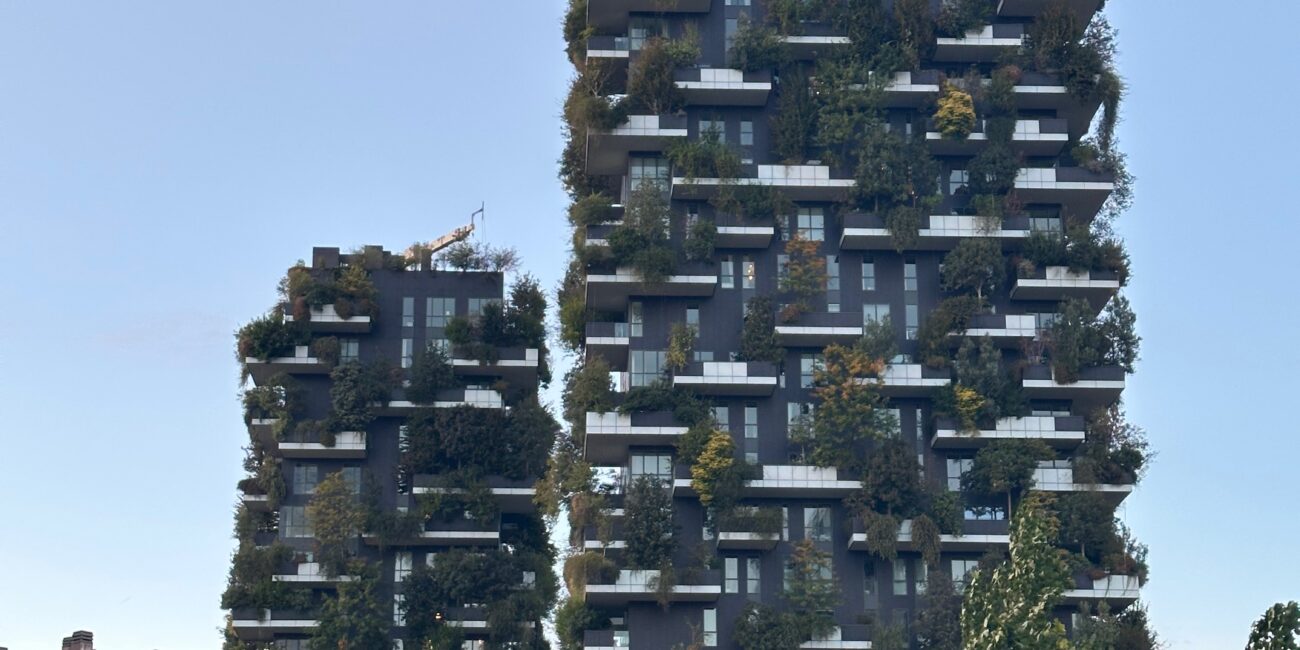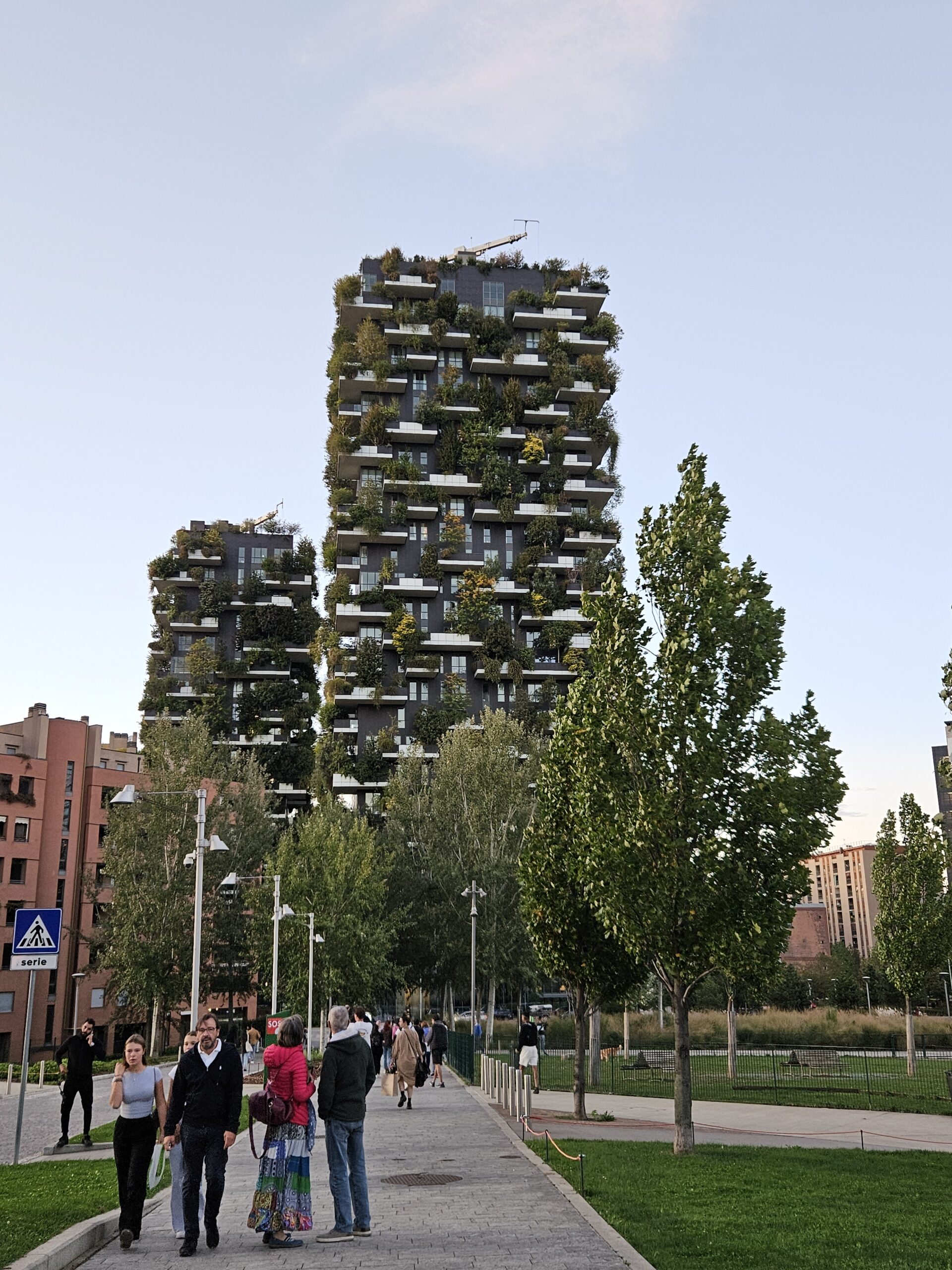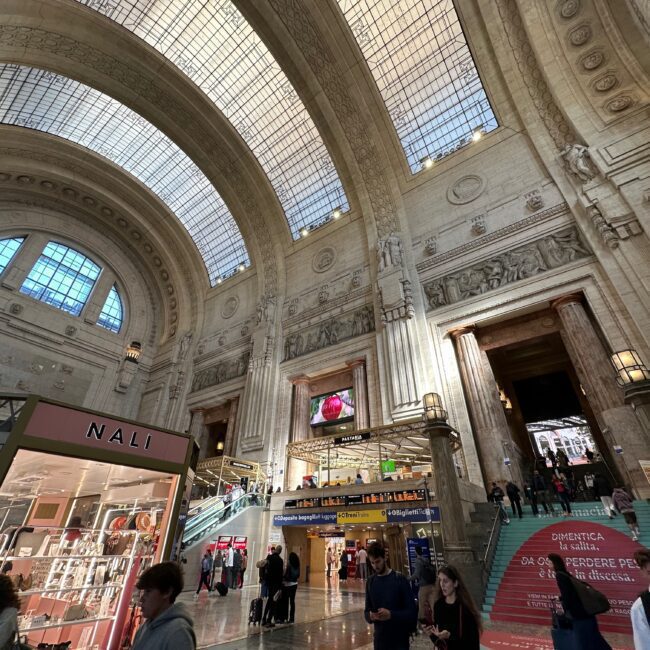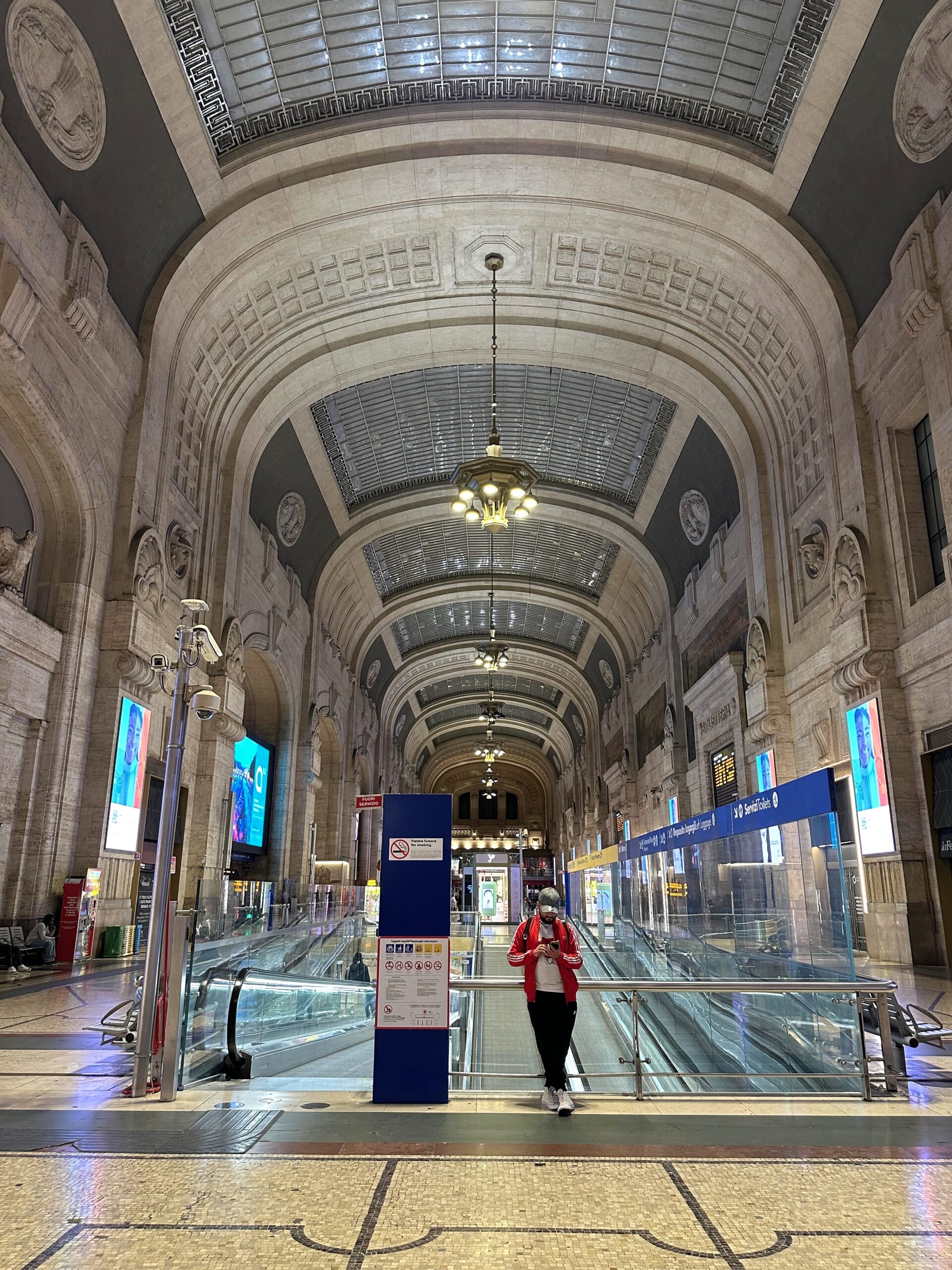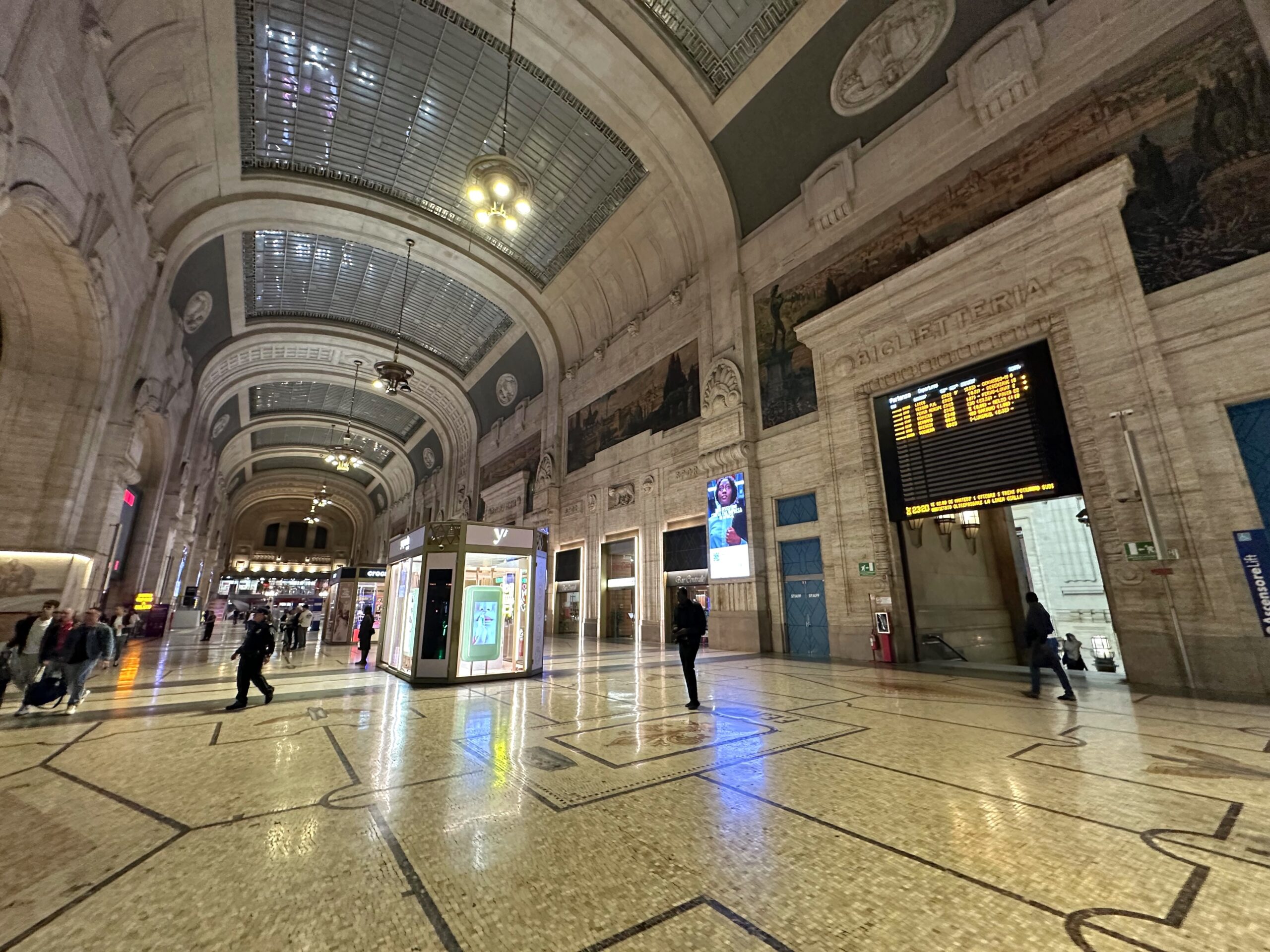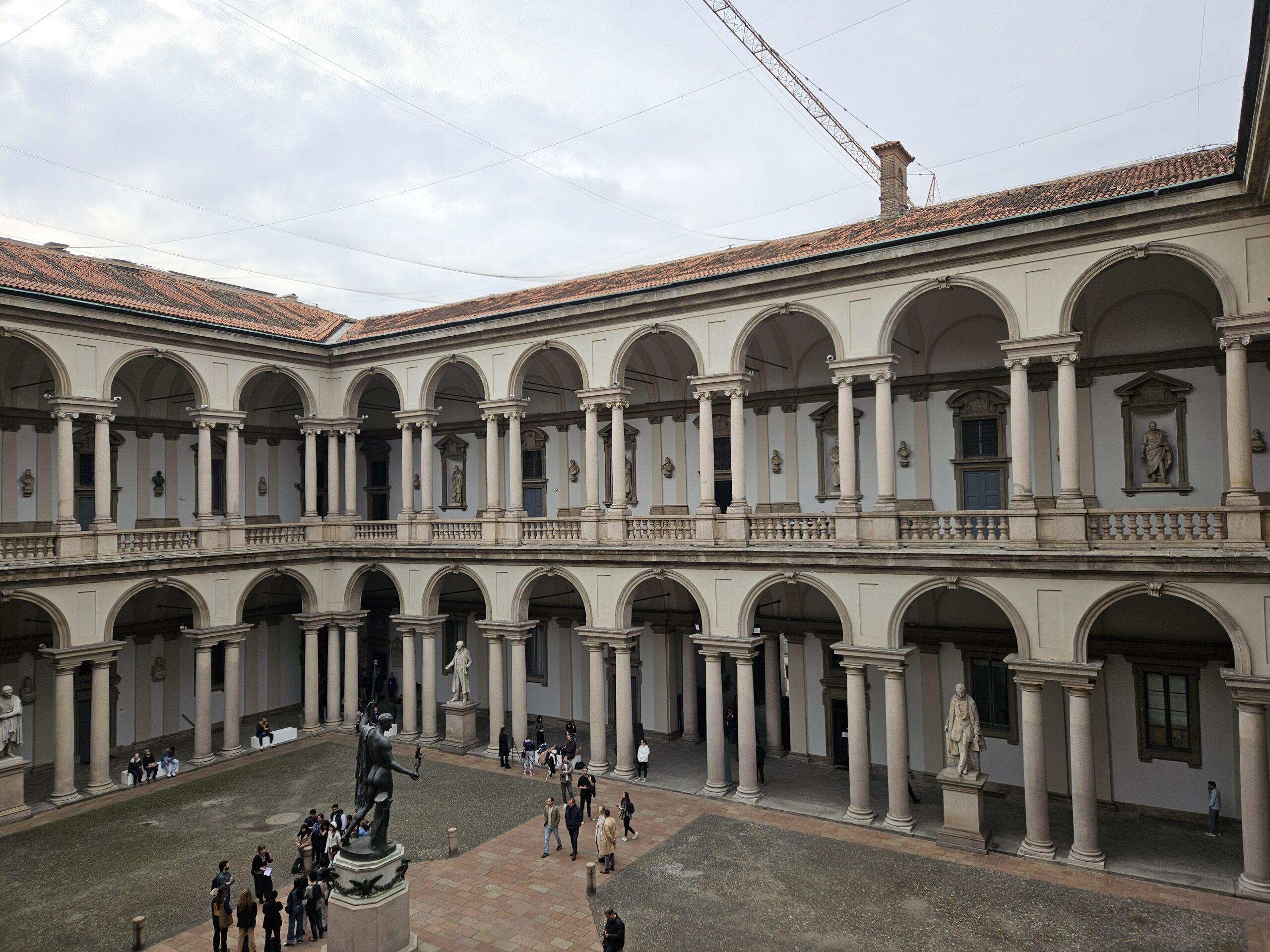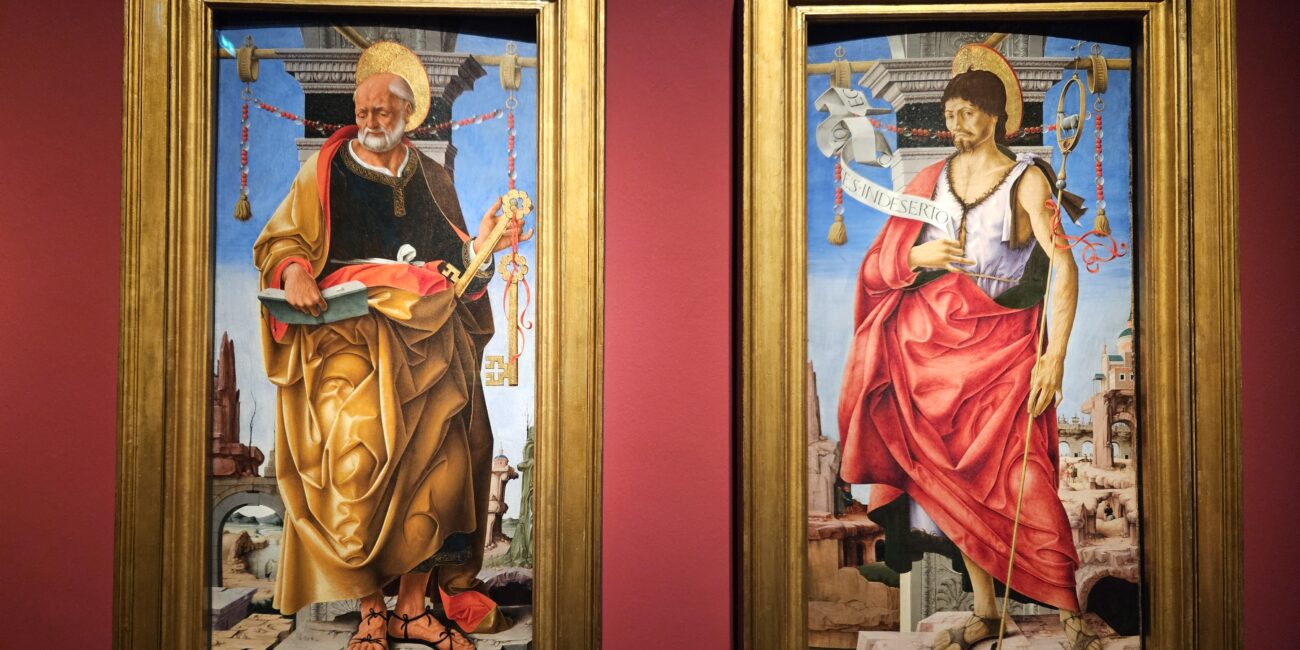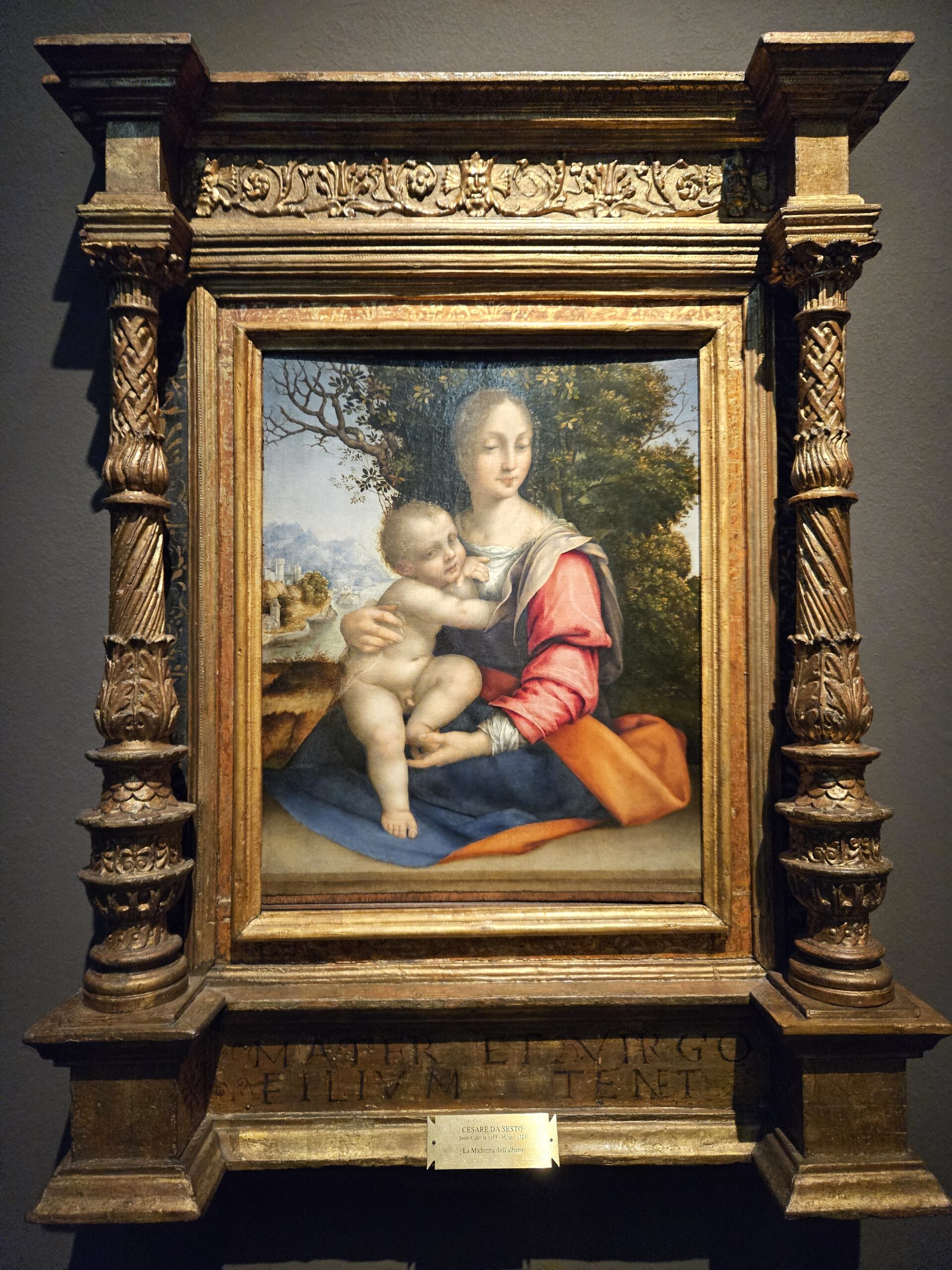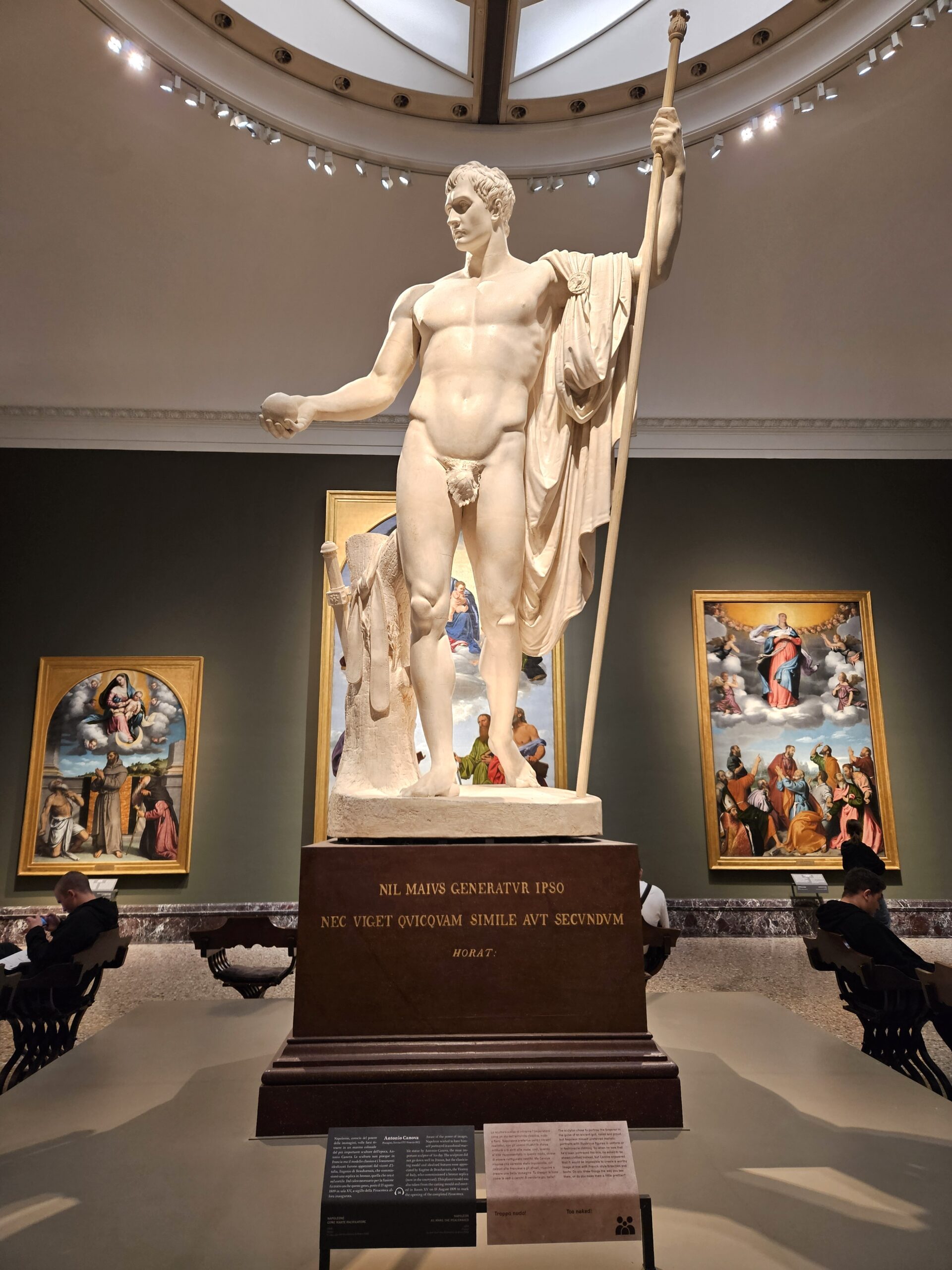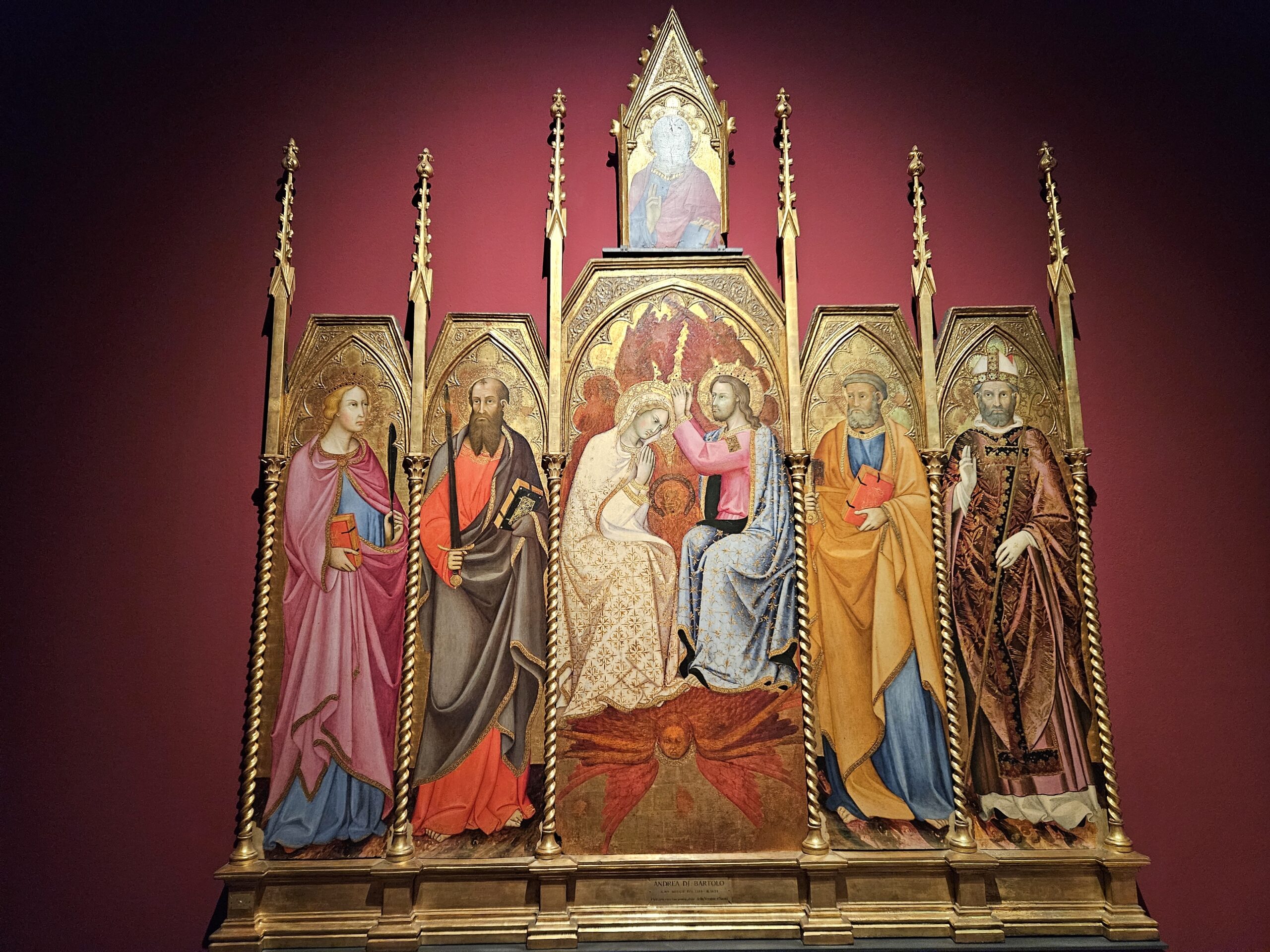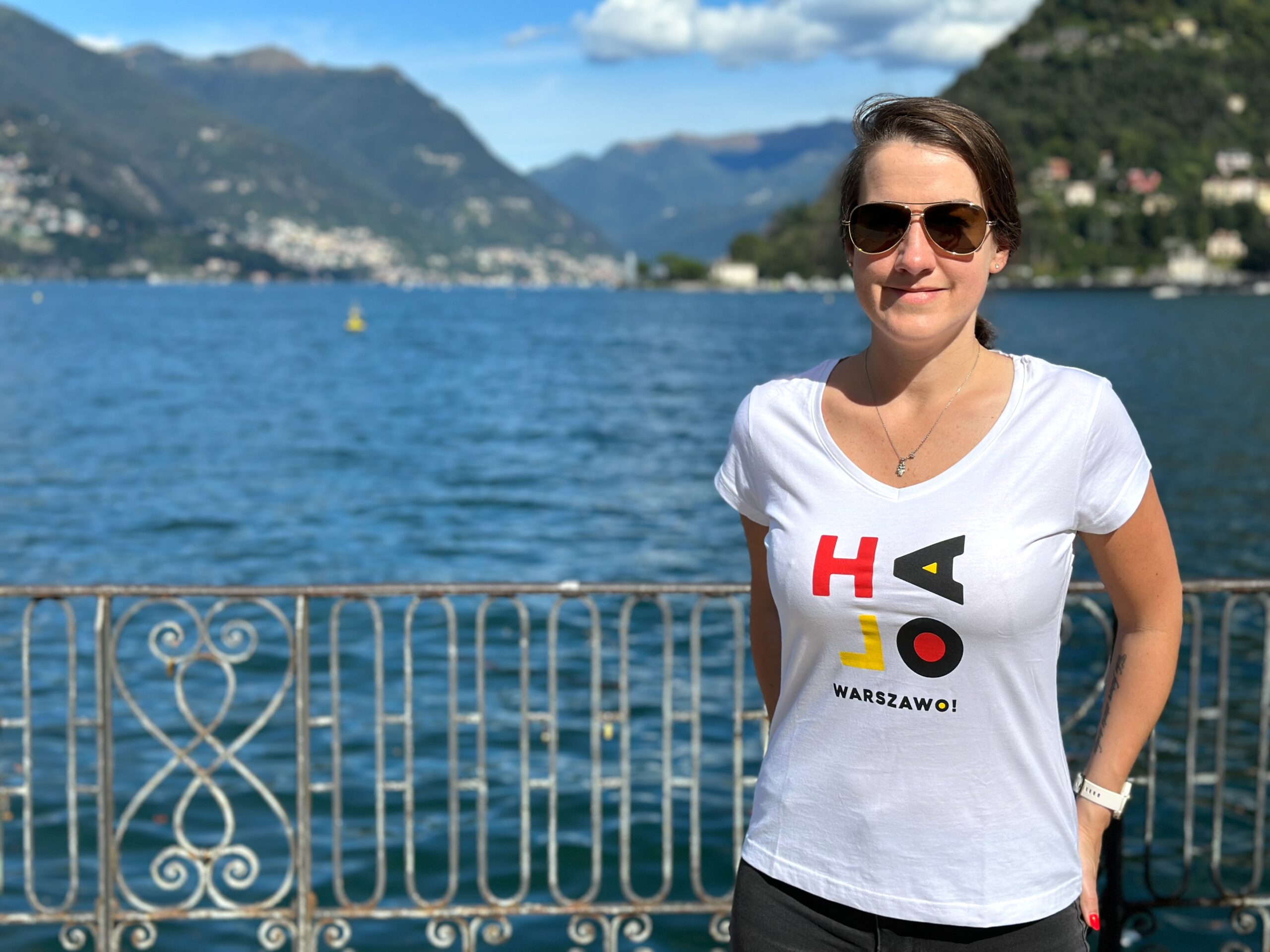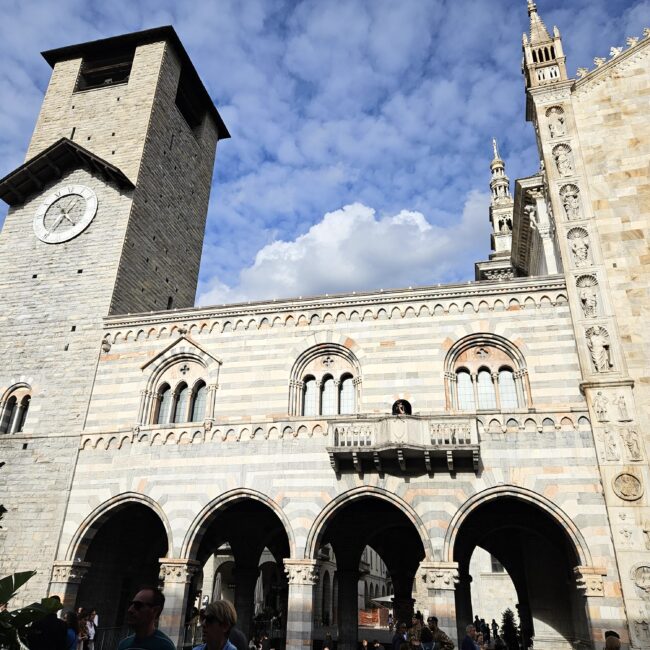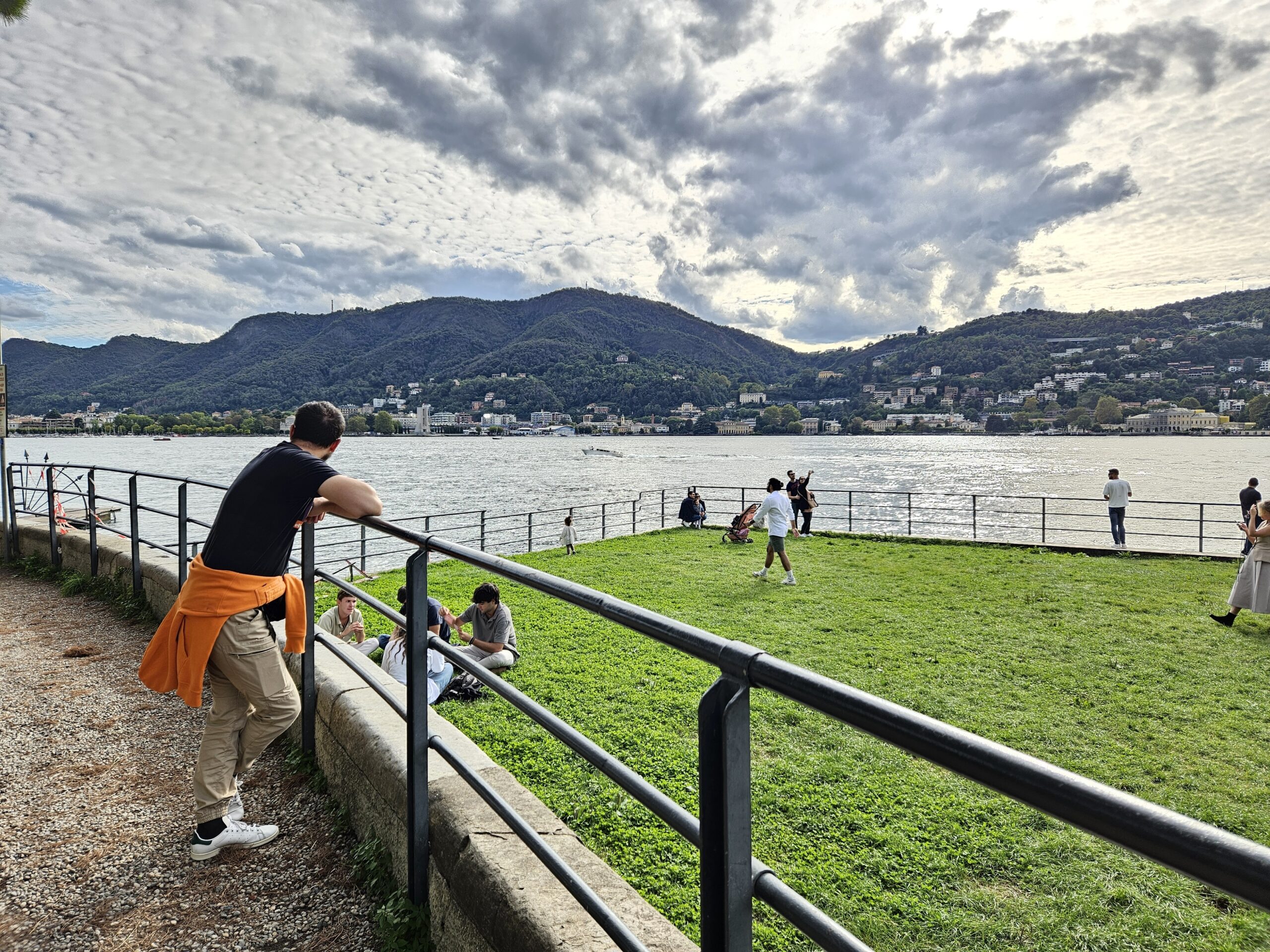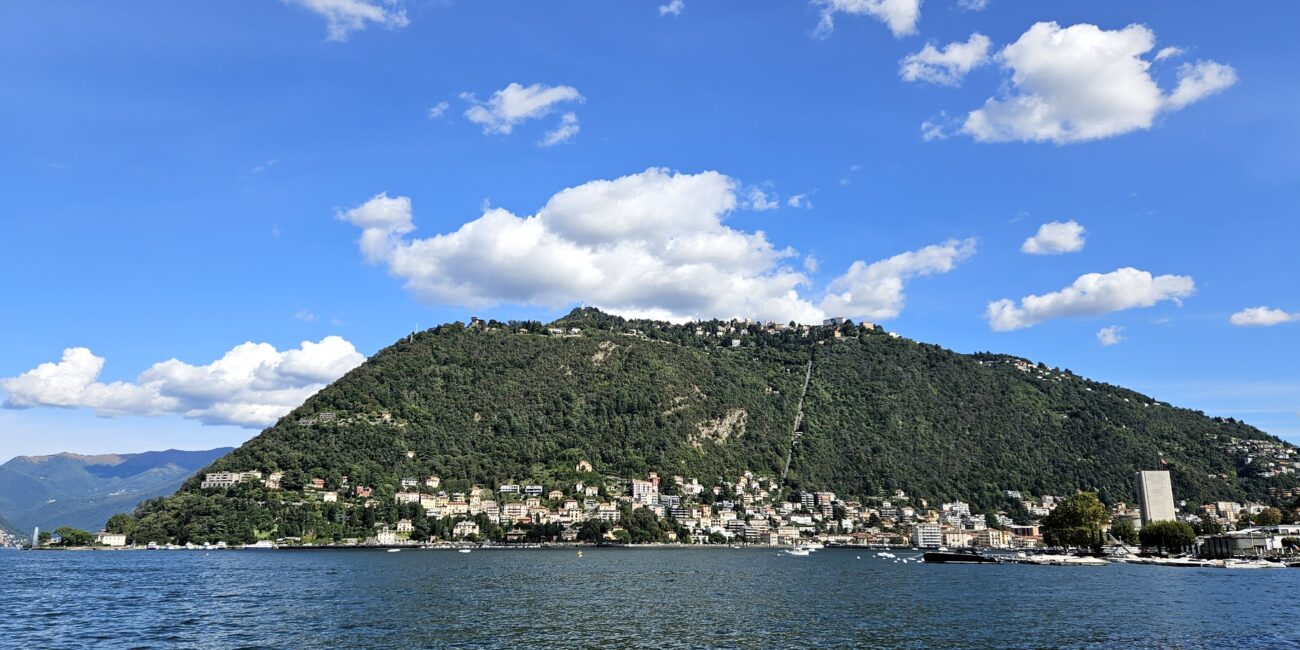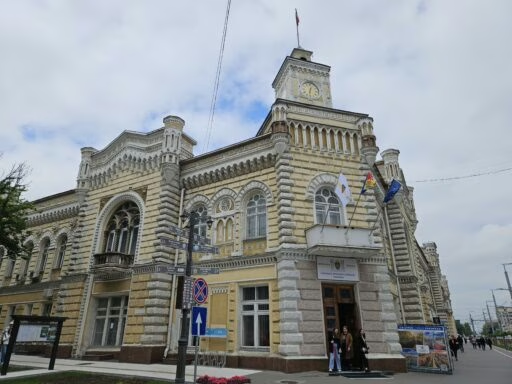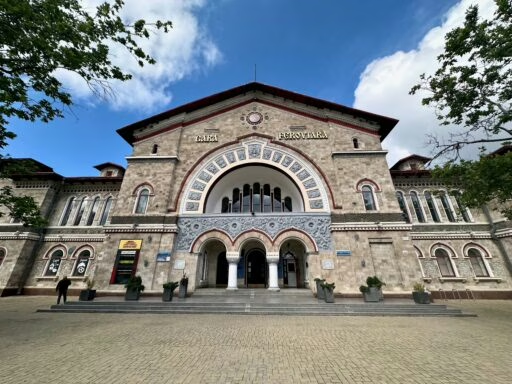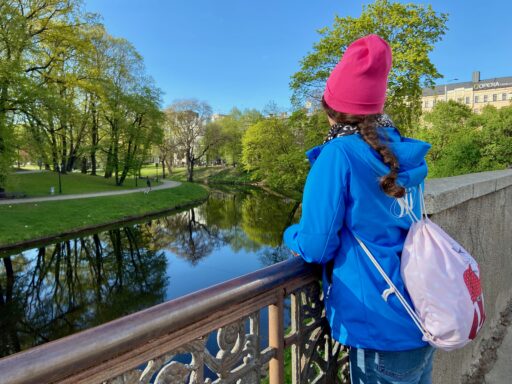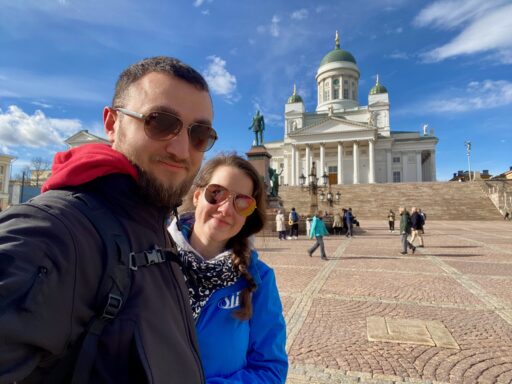This post is also available in:
Polski
Hello! 👋
Milan – a city that attracts tourists from all over the world, offering many interesting places to see. In this article we will describe what to visit during your stay, based on our experiences. From famous sights to the places that impressed us the most.
Want to find out what our trip to Milan was like? 🇮🇹 See what we visited, what surprised us, and what we recommend! ✈️ Click and read our story! 😊
We invite you to read more!
Duomo di Milano
The Duomo Cathedral – one of the city’s top attractions – was not to be missed during our visit to Milan. We bought our tickets in advance through the official website to avoid queues. Still, the Italian attitude to being punctual made itself known, and we waited to get in, despite our reserved hour.
The cathedral offers much to explore:
- The interior of the cathedral impresses with its Gothic stained glass windows and numerous sculptures. Every detail of the architecture deserves attention, and the atmosphere of the interior is conducive to long admiration.
- The terraces are a must-see – from here you have a beautiful view of the city. You can get to them by stairs or elevator, depending on your ticket.
- The Duomo Museum shows sculptures and artifacts related to the history of the cathedral’s construction, though we opted out of visiting it this time.
All in all, visiting the cathedral is a must. Queues can be long, so it’s best to reserve more time, especially for the terraces, which offer an unforgettable view of Milan and the Alps in the background.
👉 You can purchase tickets for the tour on the official website – click here.
Galleria Vittorio Emanuele II
The Galleria Victor Emmanuel II is one of Milan’s most famous sites, being both a luxury shopping center and an architectural gem. Built in the 19th century, the gallery is considered one of the oldest shopping centers in the world. Its monumental architecture, including an impressive glass roof and rich mosaics, attracts tourists from all over the world.
The gallery’s vaulted ceilings display symbols of four Italian cities – Milan, Turin, Florence and Rome. It’s a place that combines unique architectural style with luxury. Here you’ll find boutiques of well-known brands such as Prada, Gucci and Louis Vuitton. Even if you don’t plan on shopping, a walk through this gallery is a real feast for the eyes.
The gallery is a vibrant place all year round, attracting tourists and Milanese locals alike. It’s the perfect stop to take a break while sightseeing, especially in one of the elegant cafes located in the heart of the gallery.
Statua di Leonardo da Vinci
The Statue di Leonardo da Vinci is located in Milan’s Piazza della Scala, right in front of the La Scala theater. The statue was unveiled in 1872 to celebrate Leonardo’s influence on art and science. The sculpture, by Pietro Magni, depicts Leonardo surrounded by his students, clearly emphasizing his role as a teacher. In addition, the white marble gives the monument a majestic look befitting the importance of this outstanding artist.
Significantly, Leonardo spent many years in Milan, where he created his famous work “The Last Supper”. As a result, the statue is not only a tribute to his talent, but also alludes to his deep ties to the city.
L.O.V.E. – Libertà, Odio, Vendetta, Eternità (Il Dito)
Known colloquially as “Il Dito” (“The Finger”), this controversial monument created by Maurizio Cattelan is generating numerous emotions. It is officially called L.O.V.E., which stands for Libertà, Odio, Vendetta, Eternità (Freedom, Hate, Vengeance, Eternity). The sculpture depicts a hand with its middle finger extended and is located in the Piazza degli Affari, just in front of the Milan Stock Exchange.
Importantly, the interpretation of this work remains an open topic for discussion. Some believe that it symbolizes a critique of the financial world, and an expression of rebellion against banking and capitalism. On the other hand, others see the sculpture as a general expression of opposition to modern values and social change. The sculpture, made of white marble, measures about 11 meters, making it stand out from the surrounding space.
Castello Sforzesco
The Sforza Castle, a monumental fortress dating back to the 15th century, is located in the heart of Milan. It was built by Francesco Sforza, Duke of Milan, who wanted to make it both a residence and a defensive center. Over the centuries, the castle has been rebuilt and expanded several times, making it one of the most important symbols of the city.
Today, the castle serves as a cultural and museum center. Inside it you’ll find several museums, including the Museo d’Arte Antica, which offers works by prominent masters such as Michelangelo and Leonardo da Vinci. In addition, the castle has archaeological collections and a museum of musical instruments, making it attractive to different groups of tourists. What’s more, the expositions on Milan’s history provide a better understanding of the city’s turbulent past.
It is also worth mentioning that around the castle is the charming Parco Sempione park. It is the perfect place to relax after visiting the castle. As a result, Castello Sforzesco not only attracts art and culture lovers, but also tourists seeking peace and quiet in the heart of Milan.
Parco Sempione
Parco Sempione is a huge urban park of about 47 hectares, located right next to the Sforza Castle in the center of Milan. It was established in the late 19th century and has since become a popular recreational spot for locals and tourists alike.
The park is the perfect place to relax after visiting the castle or other Milanese attractions. You’ll find expansive grassy areas, walking paths, ponds and bridges, making it a great place for a picnic, jogging or just relaxing outdoors.
Arco della Pace
The Peace Arch is an impressive triumphal arch located near the Parco Sempione in Milan. Construction of the arch began in the early 19th century on the orders of Napoleon Bonaparte, who intended to commemorate his military victories. However, after his fall, the Austrian authorities took over the project and completed the construction, giving it its final shape in 1838.
The arch is made of marble and decorated with numerous sculptures and reliefs depicting scenes from European history. At the top is a quadriga, a sculpture depicting a chariot drawn by four horses, symbolizing peace. Surrounding the arch is the Piazza Sempione, which leads deep into the park, making the Arco della Pace a popular spot for tourists and locals alike, who come here to stroll and relax.
Naviglio Grande
Naviglio Grande is one of Milan’s most iconic landmarks, part of a canal system built in medieval times that was originally used to transport goods, including marble used in the construction of the Duomo Cathedral. Today, Naviglio Grande serves as the cultural and entertainment center of the city, especially coming alive in the evenings.
The canal is surrounded by atmospheric restaurants, bars and cafes, which create the perfect environment for evening strolls and meetings. On weekends, antique fairs are held along the canal, and the area is bustling with numerous cultural events. A particularly popular spot is Darsena, the old port at the end of the canal, which, after its revitalization, has become another meeting place for Milanese residents.
Chinatown
Milan’s Chinatown is one of the oldest and largest communities of Chinese in Italy, located mainly along Via Paolo Sarpi. The district is distinguished by its unique character, which combines elements of Italian architecture with influences of Chinese culture and tradition. Here you will find numerous stores selling Asian products, Chinese restaurants, tea stores and markets that offer authentic flavors and products straight from China.
The Milanese Chinatown is particularly popular with locals, but also tourists who are looking for a less touristy and more local experience. Here you can try traditional dishes such as dim sum or ramen, as well as Chinese or Thai beer – including the popular Chang, which we also found during our visit.
Piazza Gae Aulenti
Piazza Gae Aulenti is a modern piazza located in Milan’s Porta Nuova neighborhood. Named after the architect Gae Aulenti, it exemplifies a modern approach to urban design. The square is surrounded by tall buildings, including the UniCredit Tower, the tallest skyscraper in Italy.
The square features various art installations, such as fountains and modern sculptures. In the evening, it’s especially worth a visit, as modern lighting systems create a unique atmosphere. You will find numerous stores, restaurants and cafes in the area, which attracts both locals and tourists.
In addition, Piazza Gae Aulenti is not just a commercial place, but also a social space. A variety of events and gatherings are regularly held here, making the square vibrant all year round. Therefore, this place perfectly reflects the modern character of Milan.
Bosco Verticale
Bosco Verticale, or Vertical Forest, is one of the most innovative architectural projects in Milan and the world. This complex consists of two residential towers, which were designed by architect Stefano Boeri and completed in 2014. The 76 and 111-meter high towers are unique because their facades are covered with dense vegetation – trees, shrubs and other plants, making the buildings look like a vertical forest.
Bosco Verticale is not only an aesthetic project, but also an ecological one – vegetation on the buildings helps reduce CO2 emissions, improves air quality and protects residents from noise. In total, there are about 800 trees, 4,500 shrubs and 15,000 groundcover plants and perennials on the two towers. This provides vegetation equivalent to an area of about 30,000 square meters of forest and scrubland.
Milano Centrale Railway Station
Milano Centrale is one of the largest and busiest train stations in Europe, located in the heart of Milan. Opened in 1931, it is a key transportation hub, serving both domestic and international connections. The station has an impressive eclectic-style facade, combining elements of classicism and art déco, and its monumental appearance is more reminiscent of a palace than a typical train station.
Thousands of passengers pass through Milano Centrale every day, using high-speed train services that connect Milan to other Italian cities, including Rome, Florence and Turin, as well as international cities such as Paris and Zurich. The station is also a key point for local suburban connections, as well as access to Milan Malpensa Airport via the Malpensa Express high-speed train.
Pinacoteca di Brera
Pinacoteca di Brera is one of the most important art museums in Italy, located in the historic Brera district of Milan. It is located in the building of a former Jesuit monastery, which now also serves as the headquarters of the Academy of Fine Arts. Founded in 1776 by Austrian Emperor Joseph II, the museum was originally intended as a teaching institution for art students, but over time became a public art gallery.
The museum’s collection contains some of the most important works of European painting, including works by Renaissance and Baroque masters.
You can purchase tickets for the tour on the official website – click here.
Quick trip to Como
Como is a charming town located on the shores of the lake of the same name, just an hour from Milan. Known for its beautiful views, surrounded by mountains and full of historical monuments, Como attracts both tourists and lovers of quiet walks by the water. Its scenic location and proximity to the Alps make it an ideal destination for a day trip from Milan.
One of Como’s biggest attractions is Lake Como itself – one of the deepest and clearest lakes in Europe. Here you can take a boat cruise on the lake to admire the picturesque towns and villas situated on its shores. Among the most beautiful places to see are Villa Olmo, with its beautiful gardens, and Cattedrale di Santa Maria Assunta (Como Cathedral), a Gothic temple that is one of the city’s most important monuments.
Como’s old town is a maze of narrow streets full of restaurants, cafes and stores. Strolling through it, you will come across numerous monuments, including the Torre del Comune, a medieval tower, or the Broletto, a former town hall dating back to the 13th century.
In addition to cultural and historical attractions, Como also offers great opportunities for nature lovers. You can take a cable car ride to Brunate, which offers an unforgettable view of the lake and surrounding mountains. However, when we arrived, the queues at the ticket office were huge, which effectively discouraged us from waiting. In the 21st century, it should already be possible to purchase tickets online, which would avoid such a long wait and make the process more organized.
Summary
Milan is a city that naturally combines a variety of experiences, from culture and art to fashion and modern lifestyles. Walking through its streets, it’s easy to see how the diverse spaces create an atmosphere where everyone can find something to interest them.
It is this mix that makes Milan an ideal destination for both short and longer trips. The city invites you to explore both well-known attractions and hidden corners that can often prove just as interesting. It’s worth going here with an open mind to diversity and enjoy what Milan has to offer in its unique daily rhythm.

